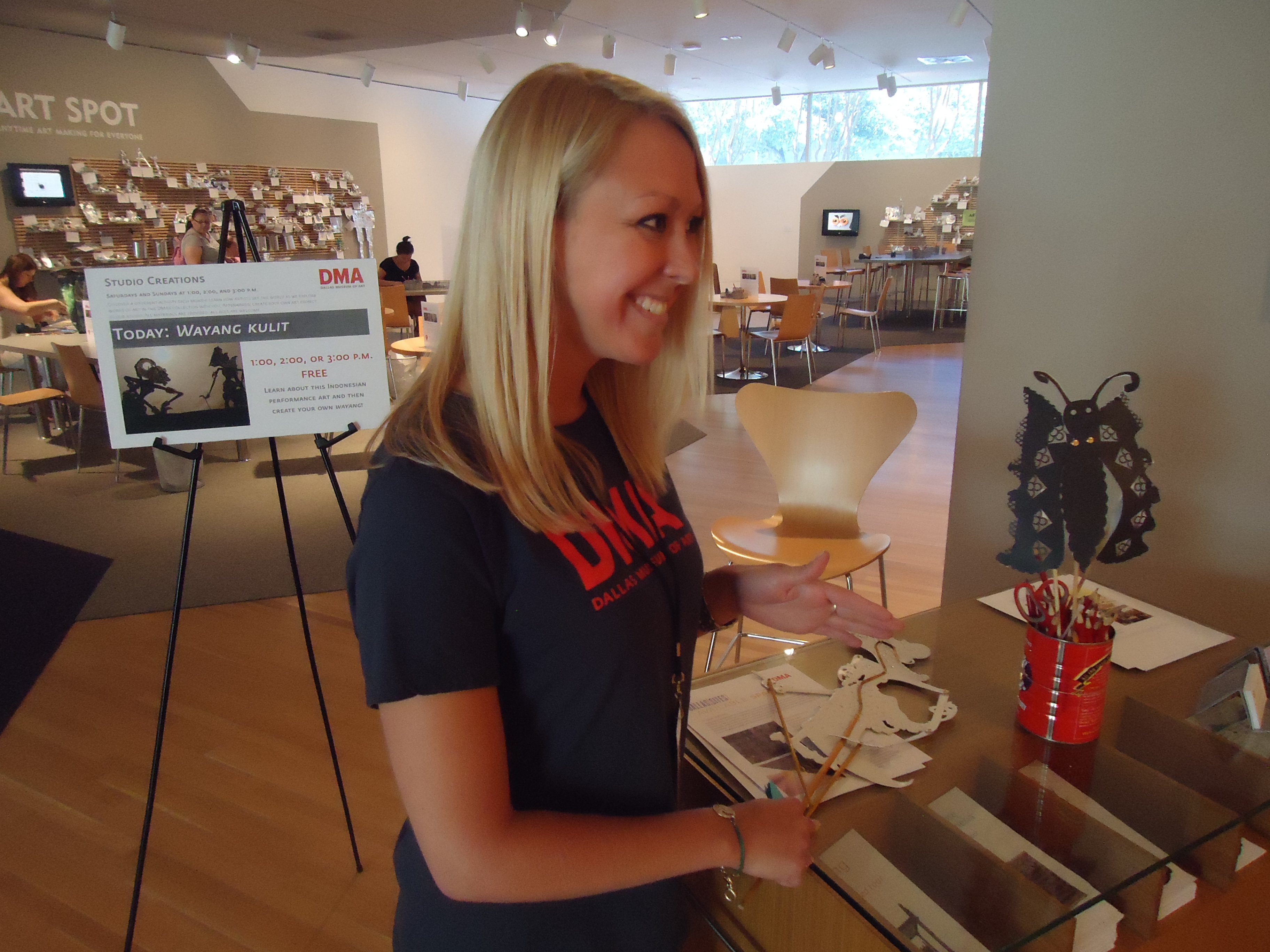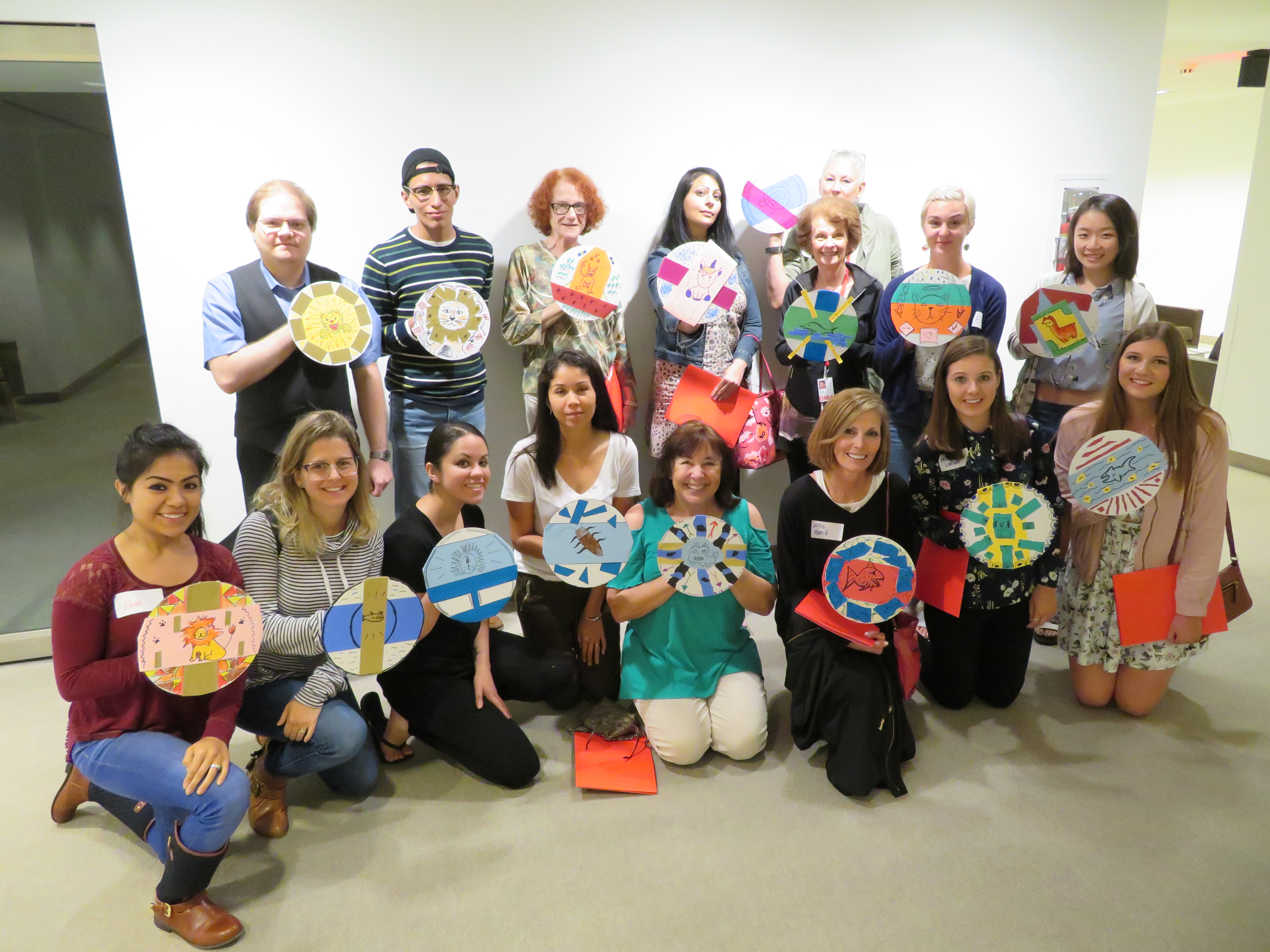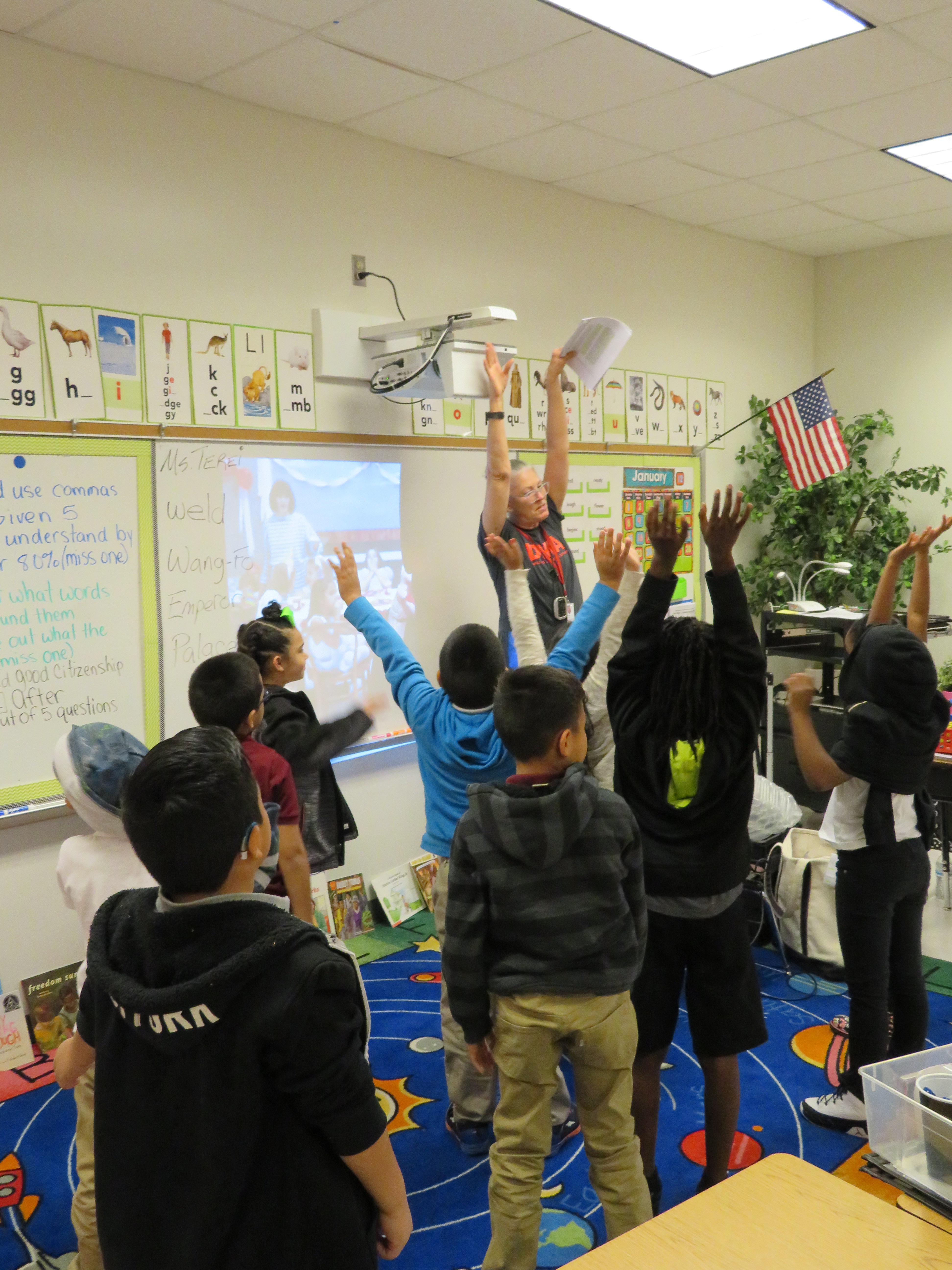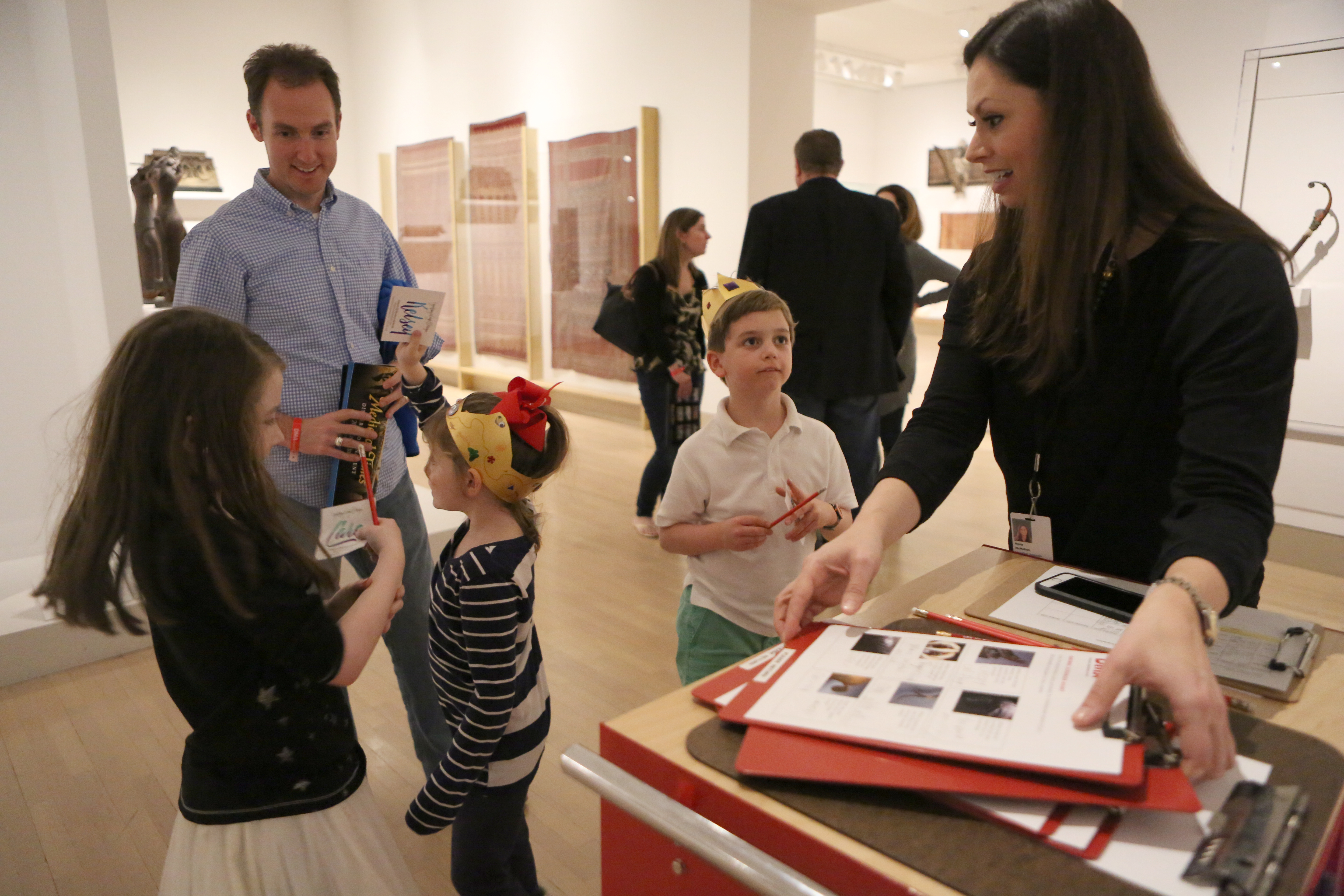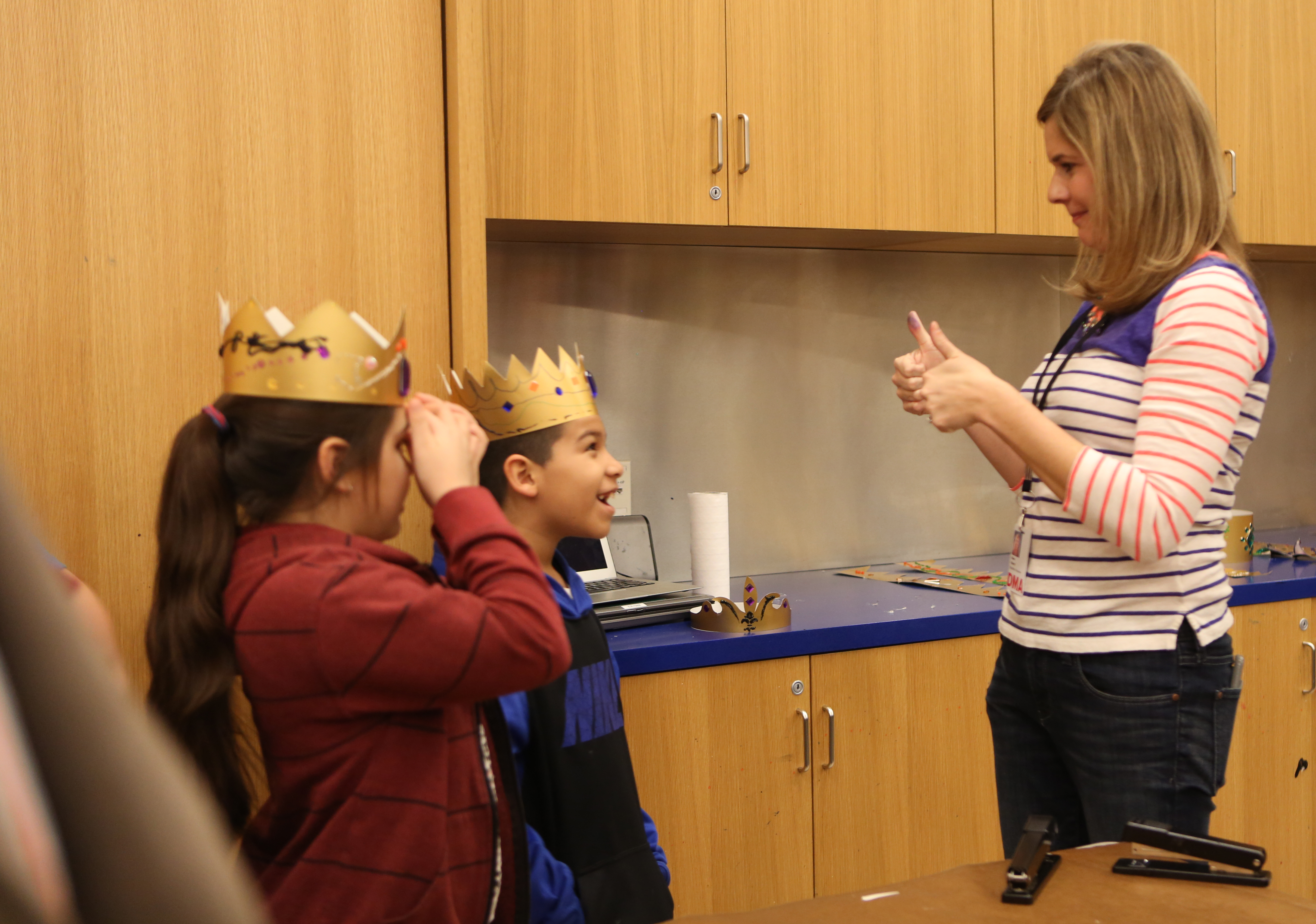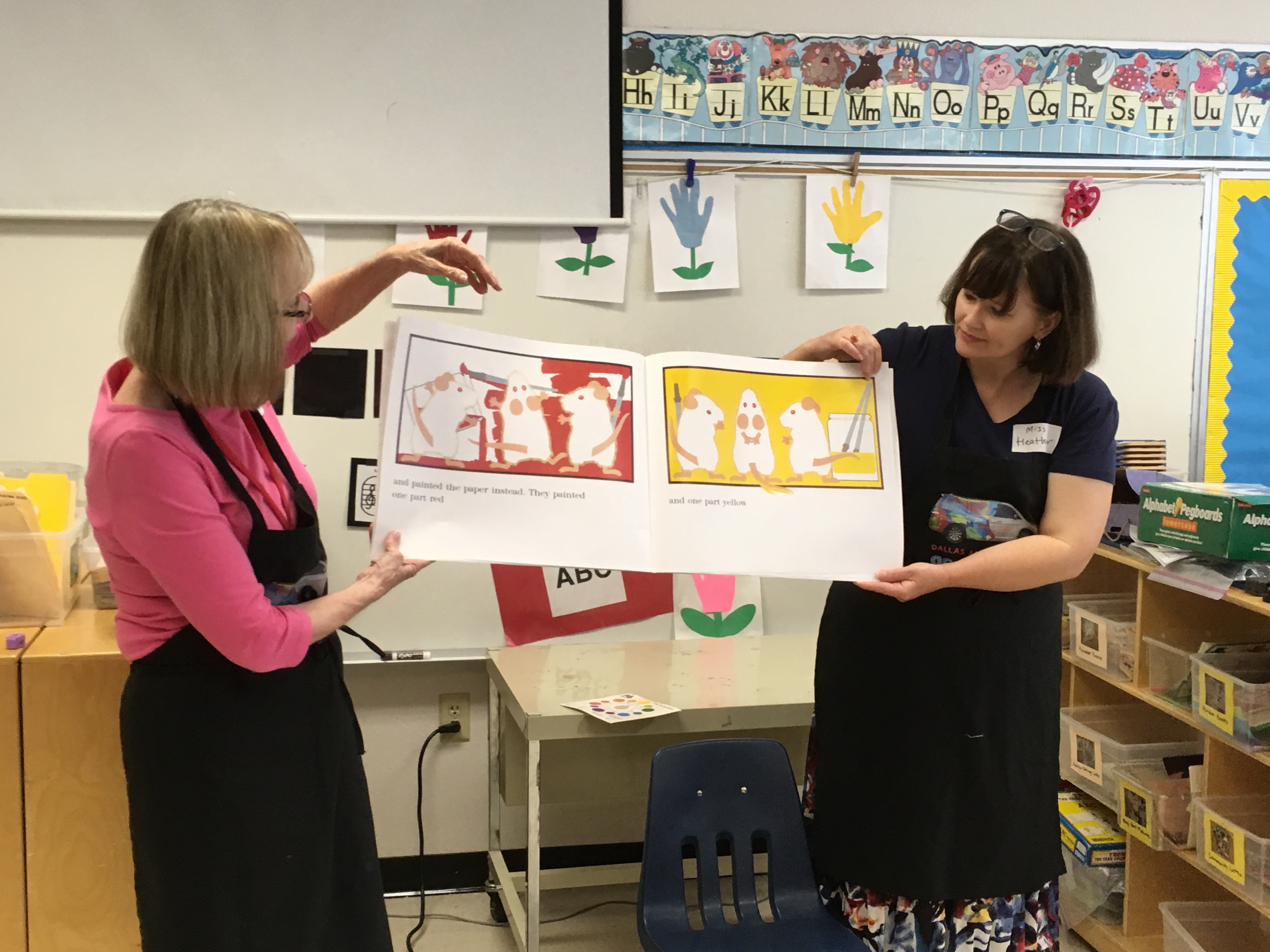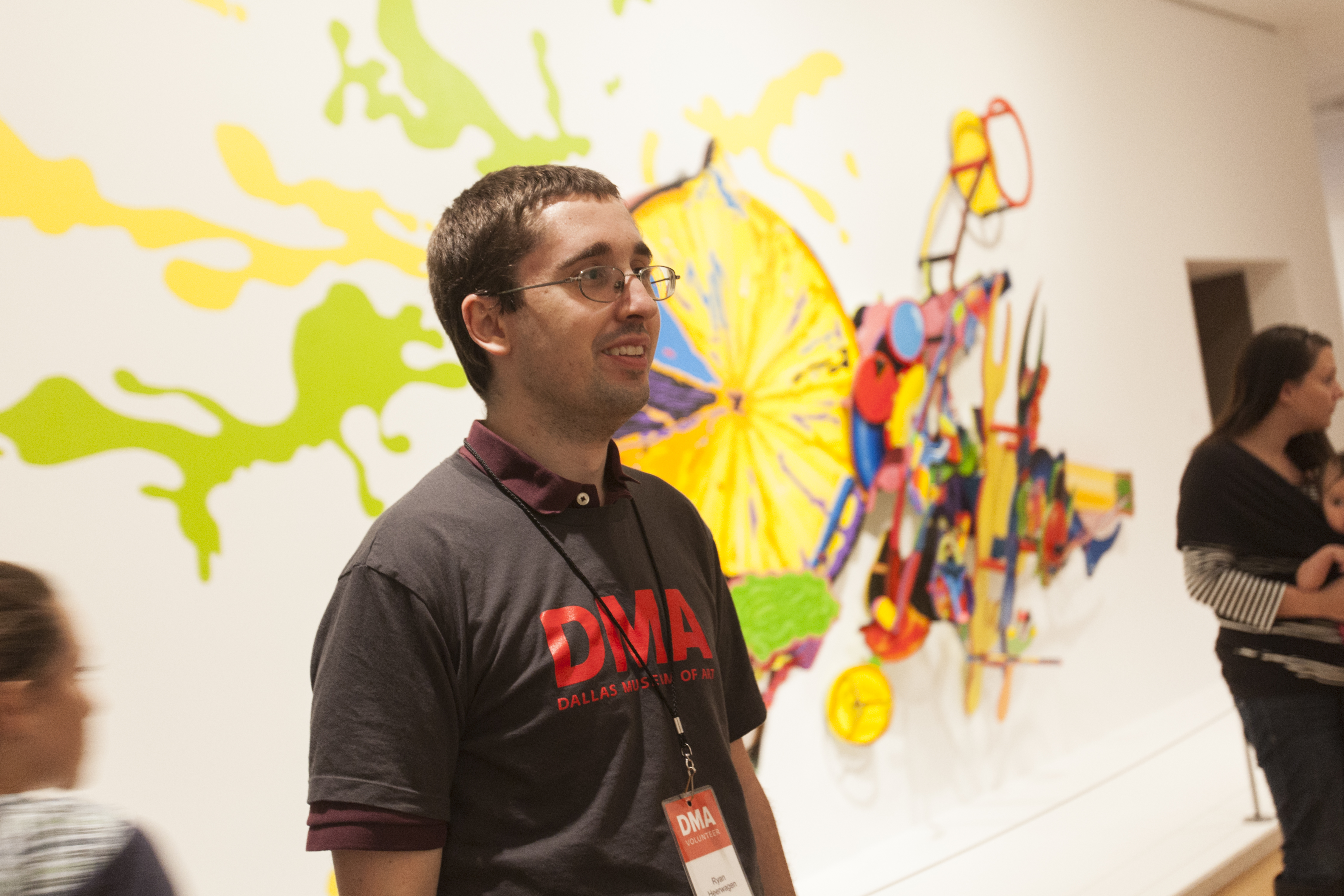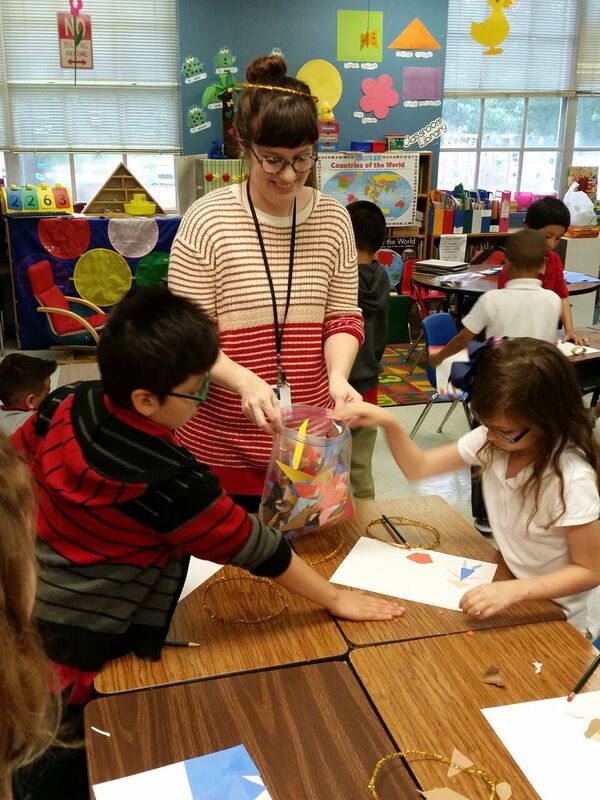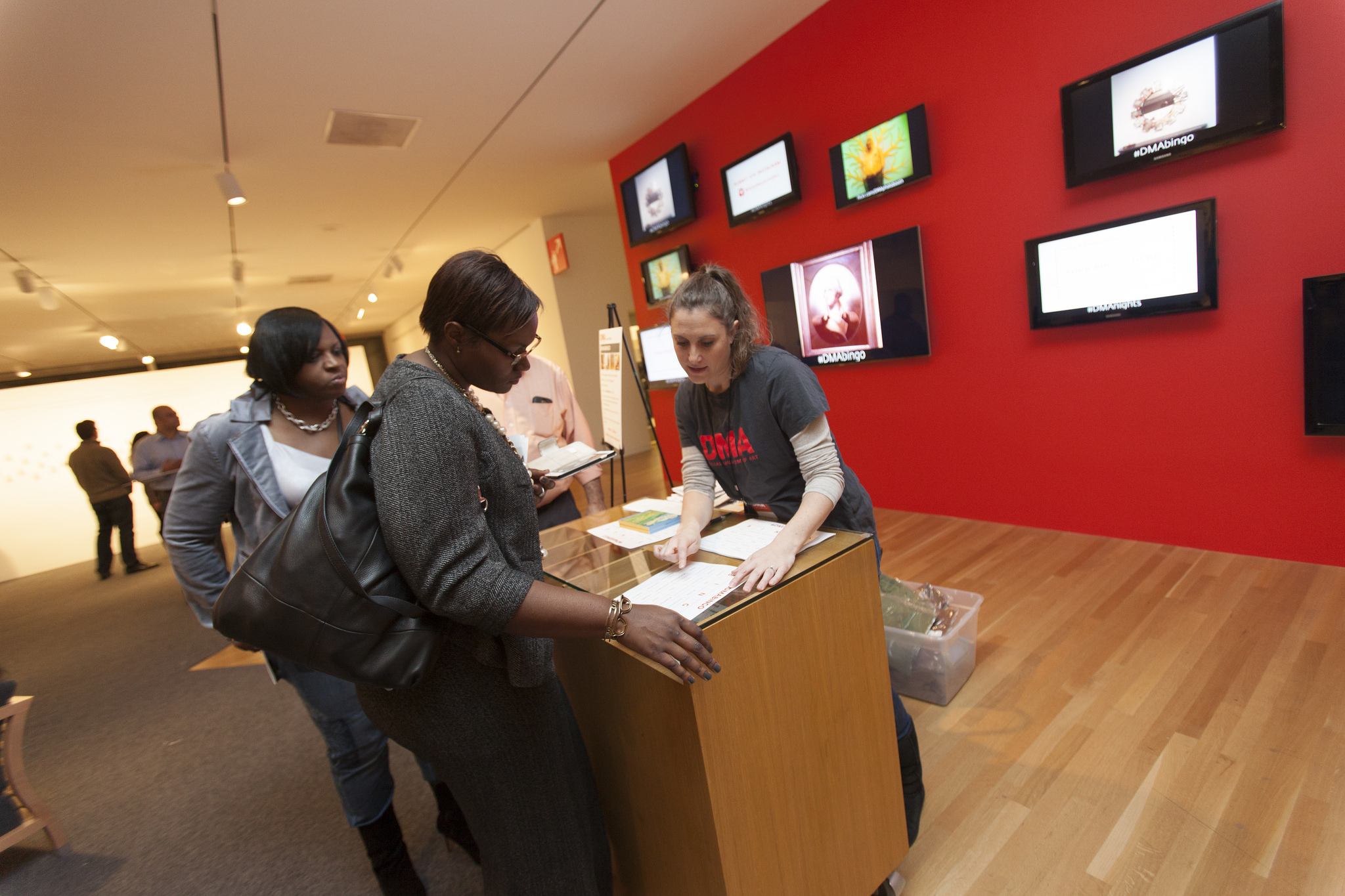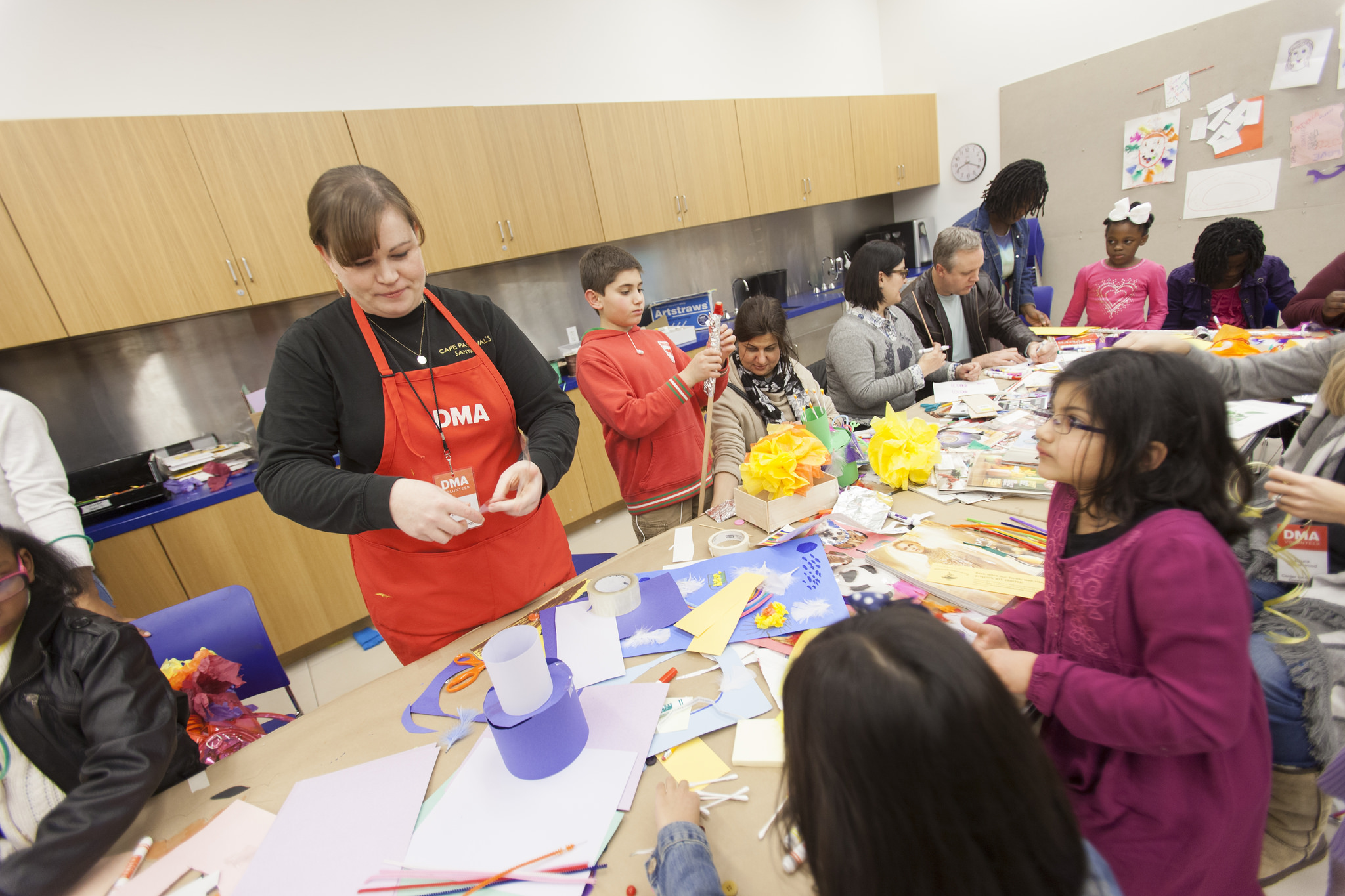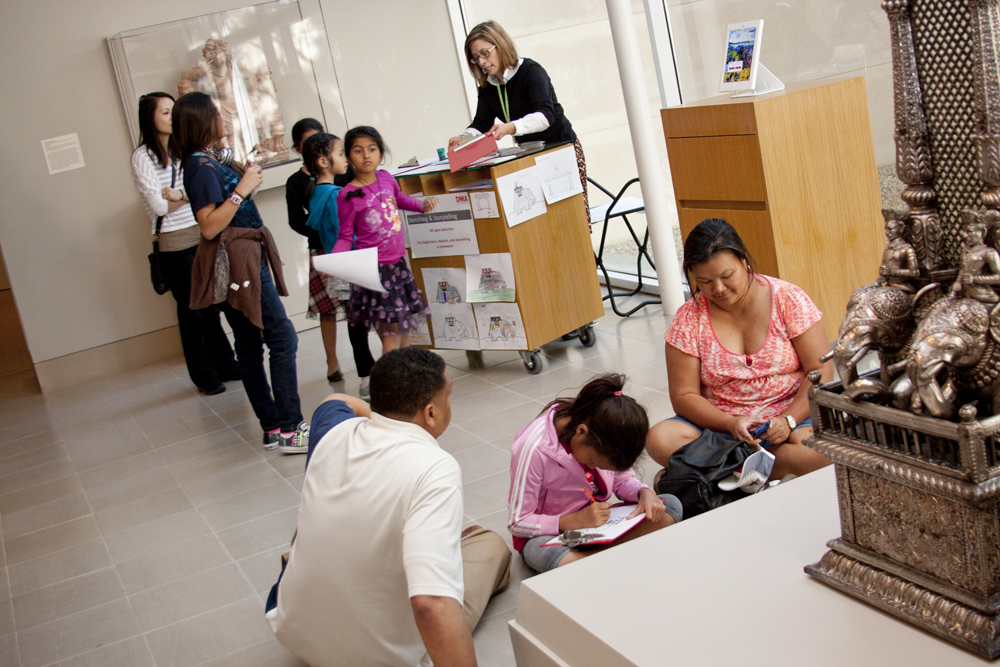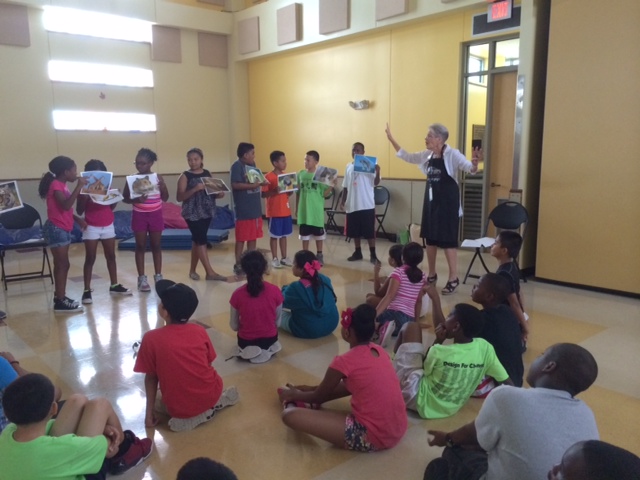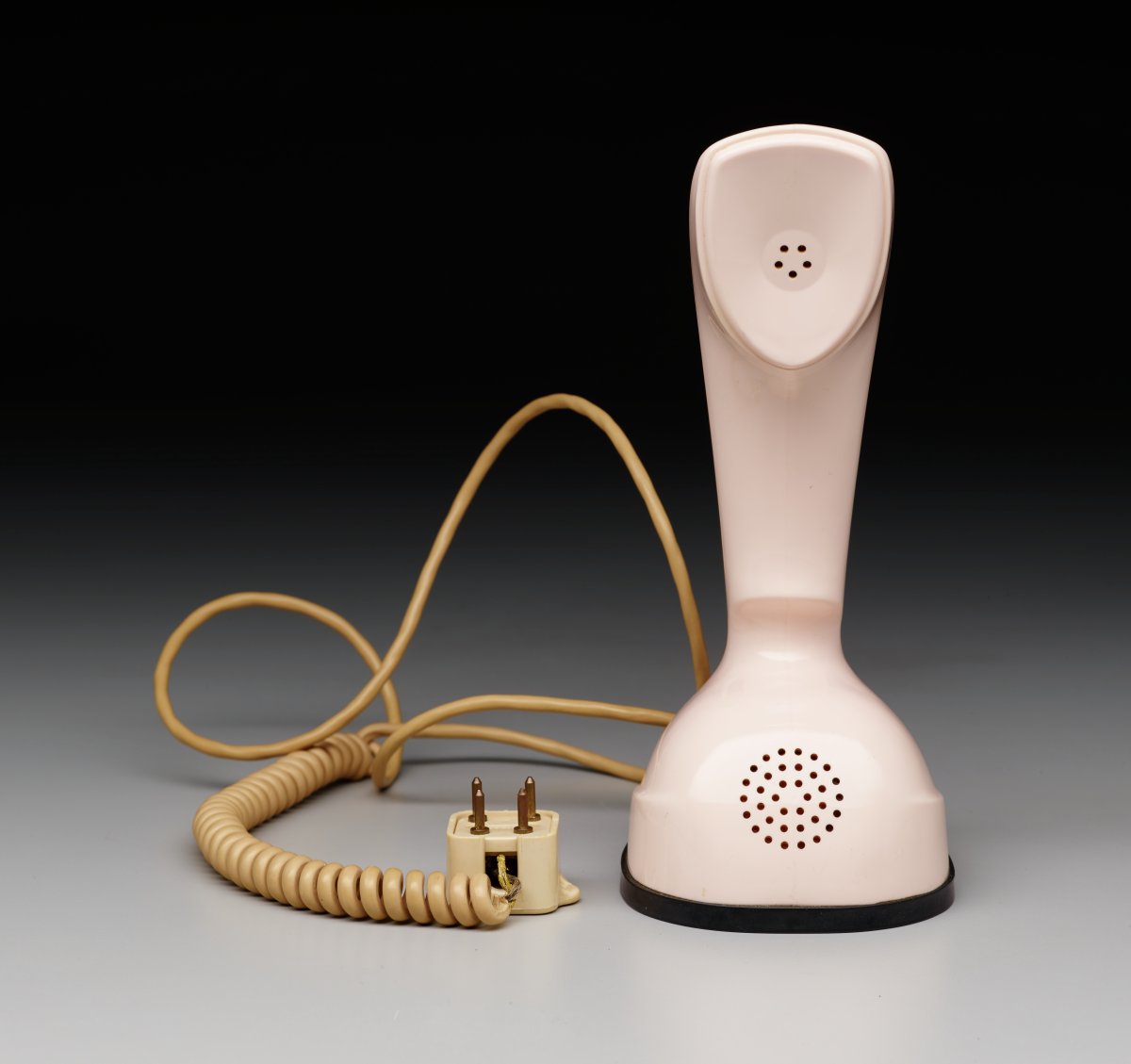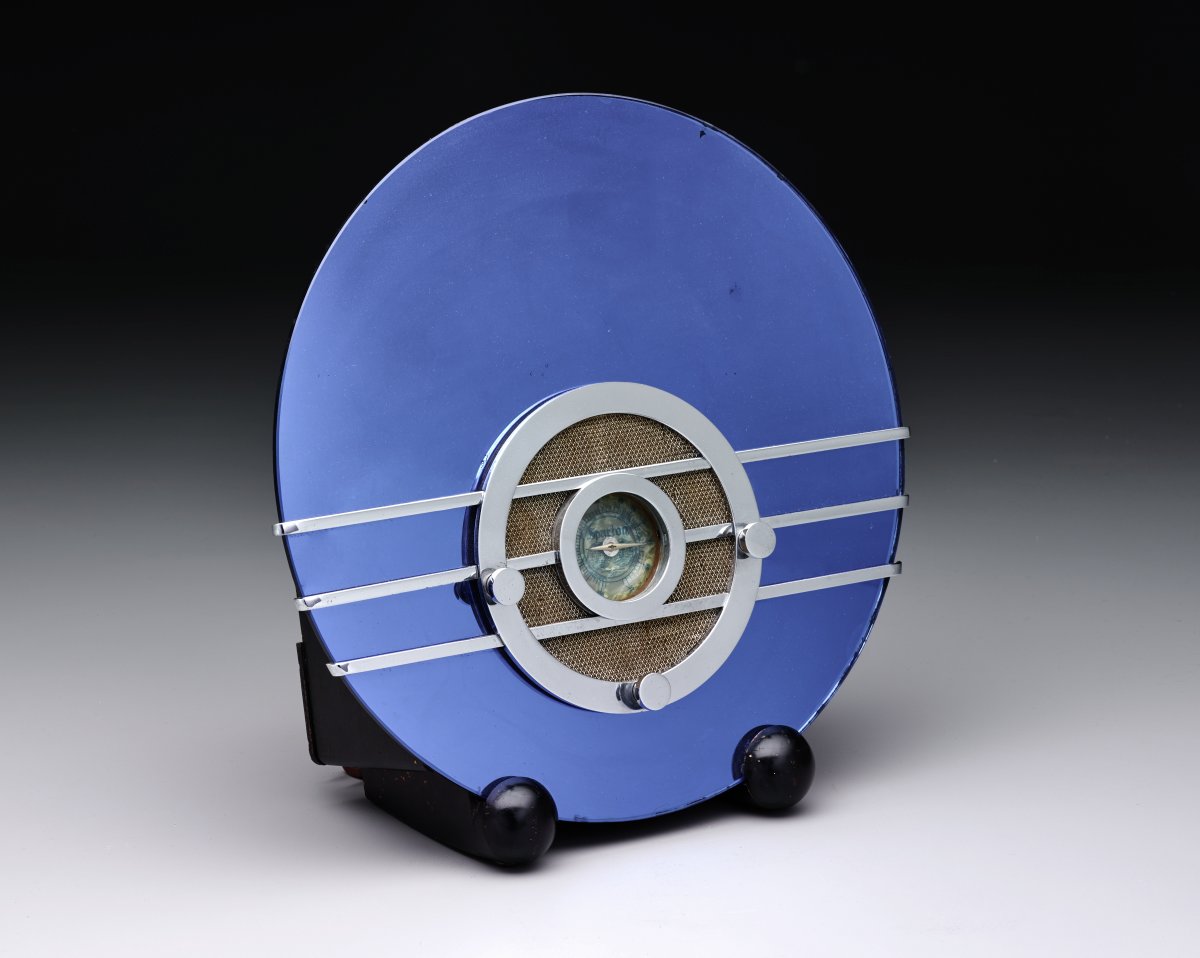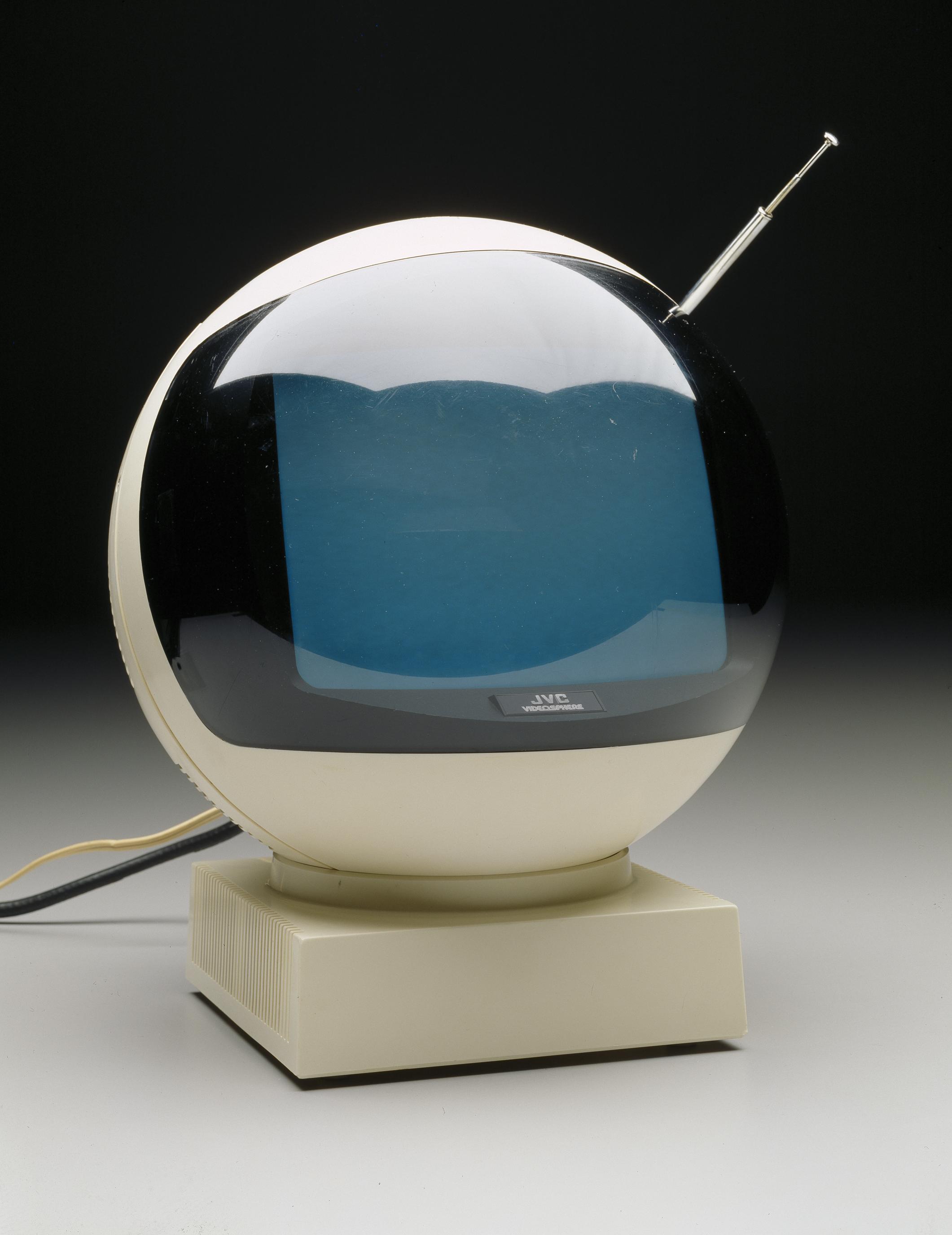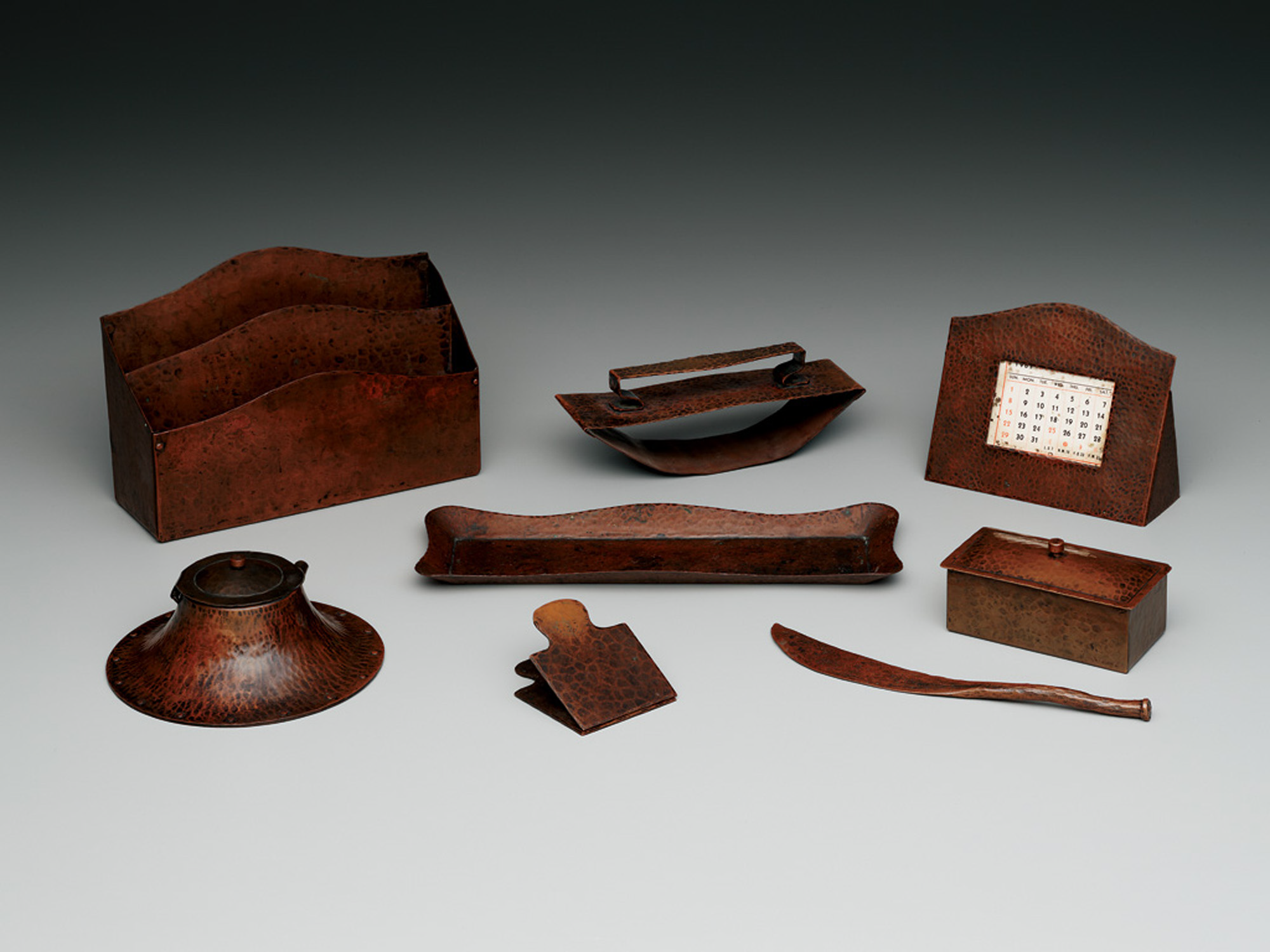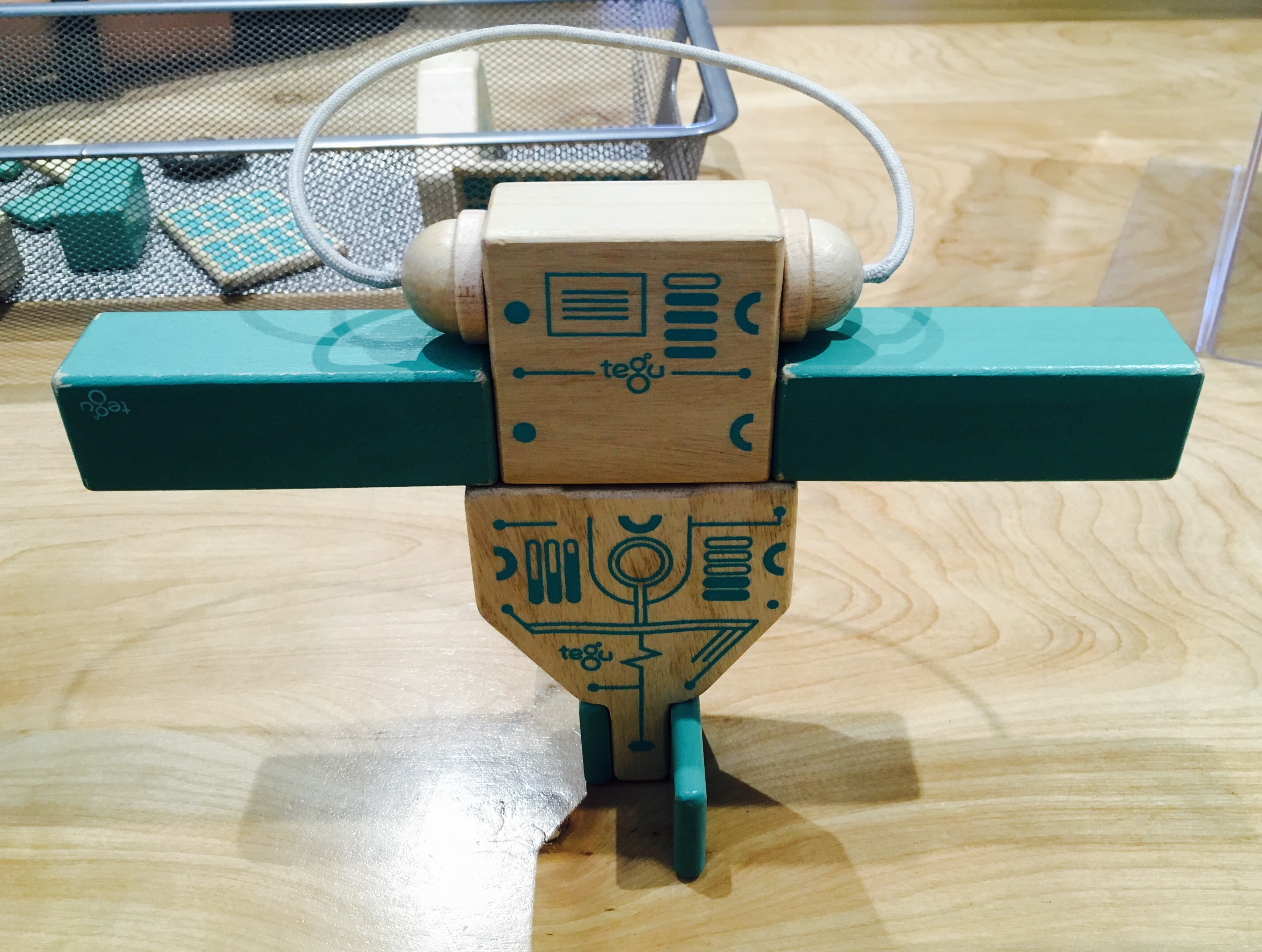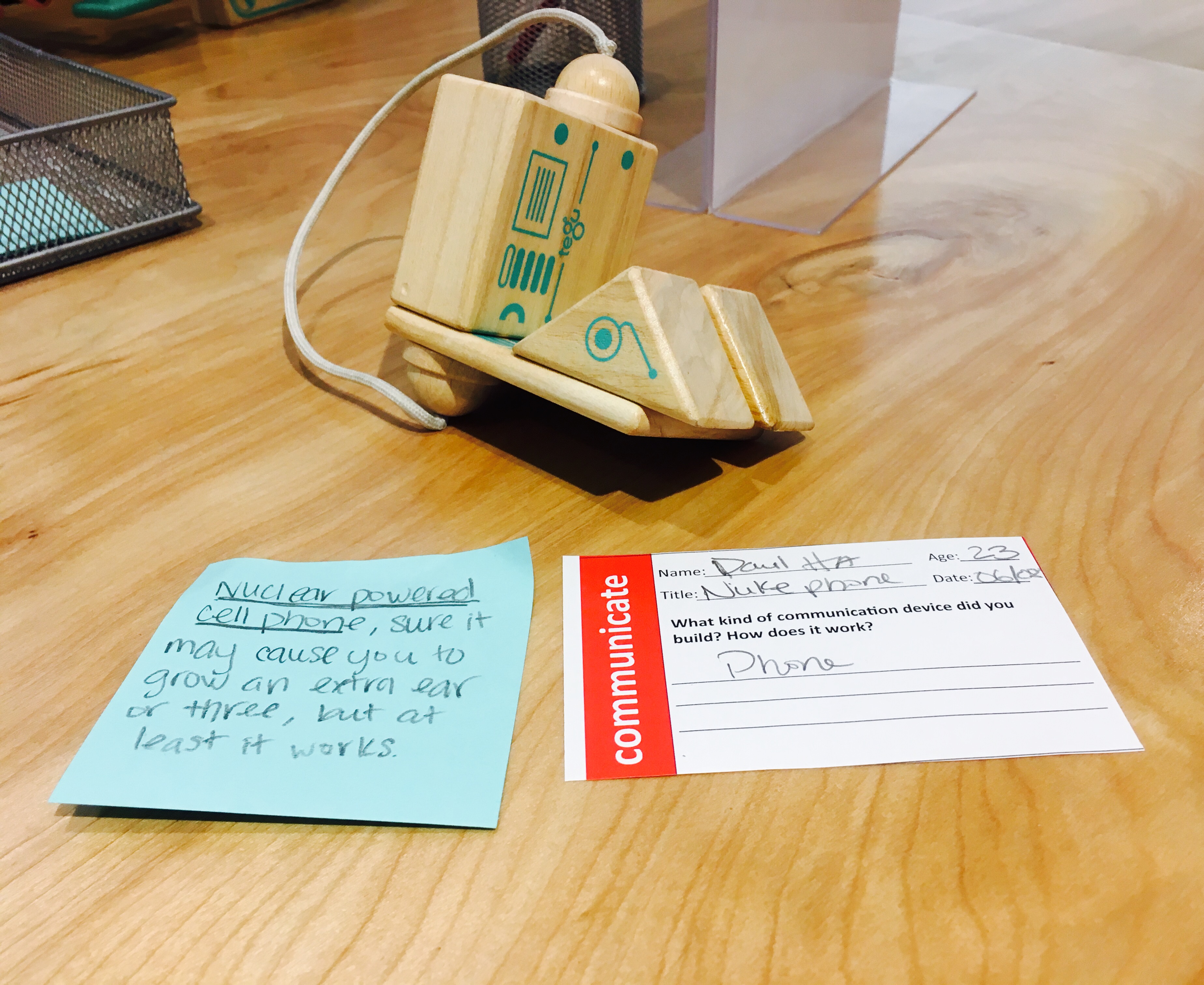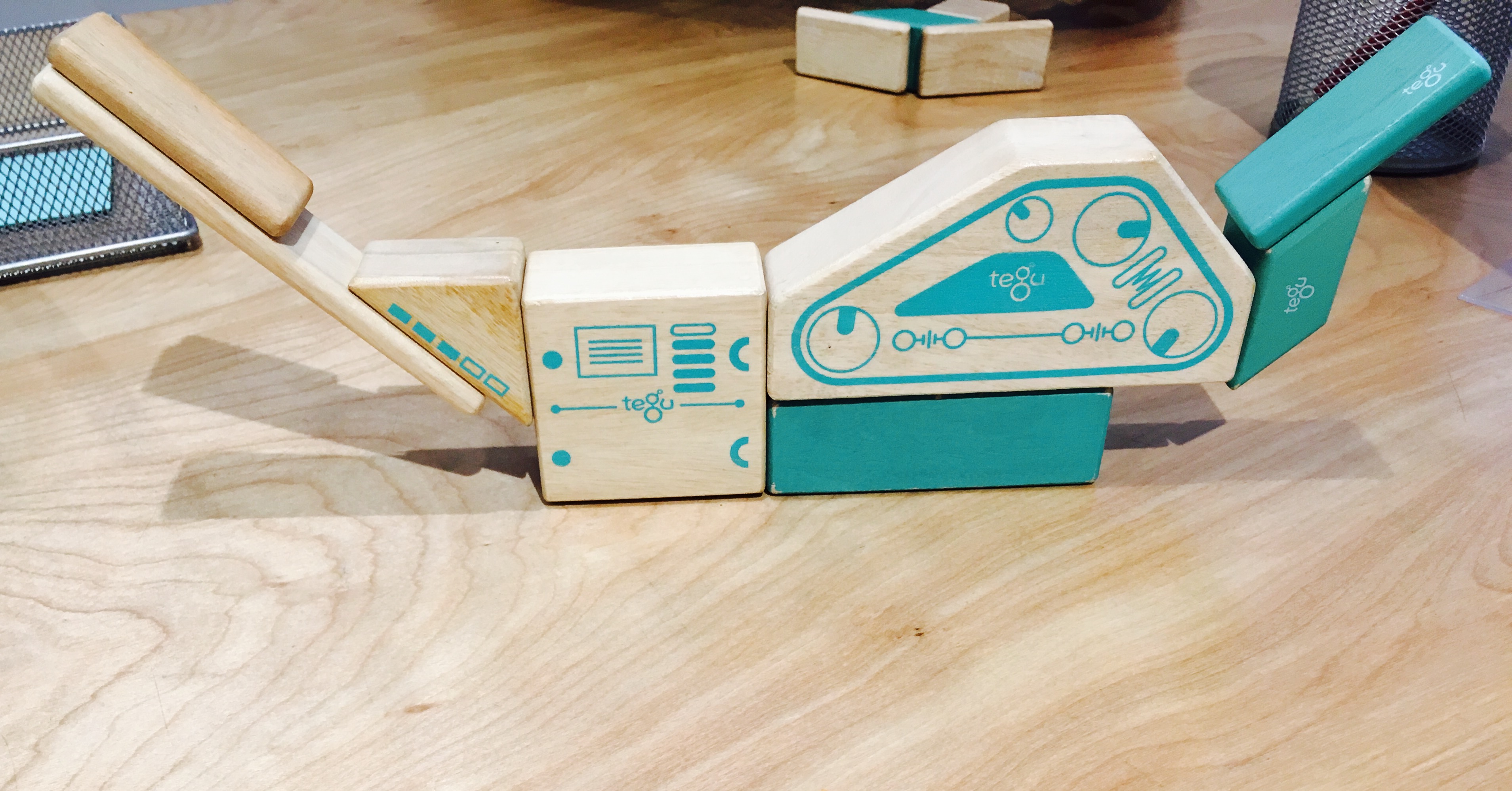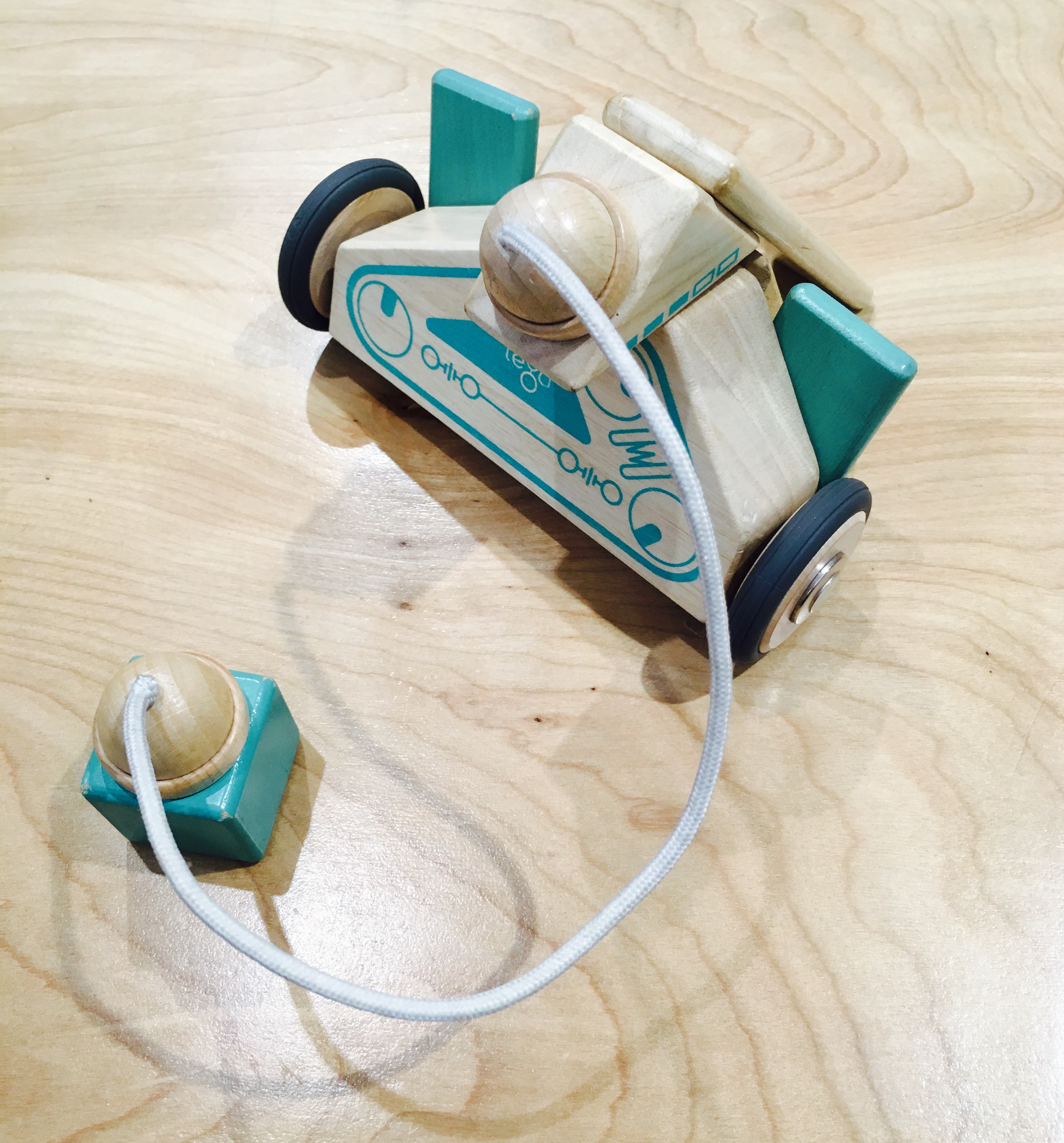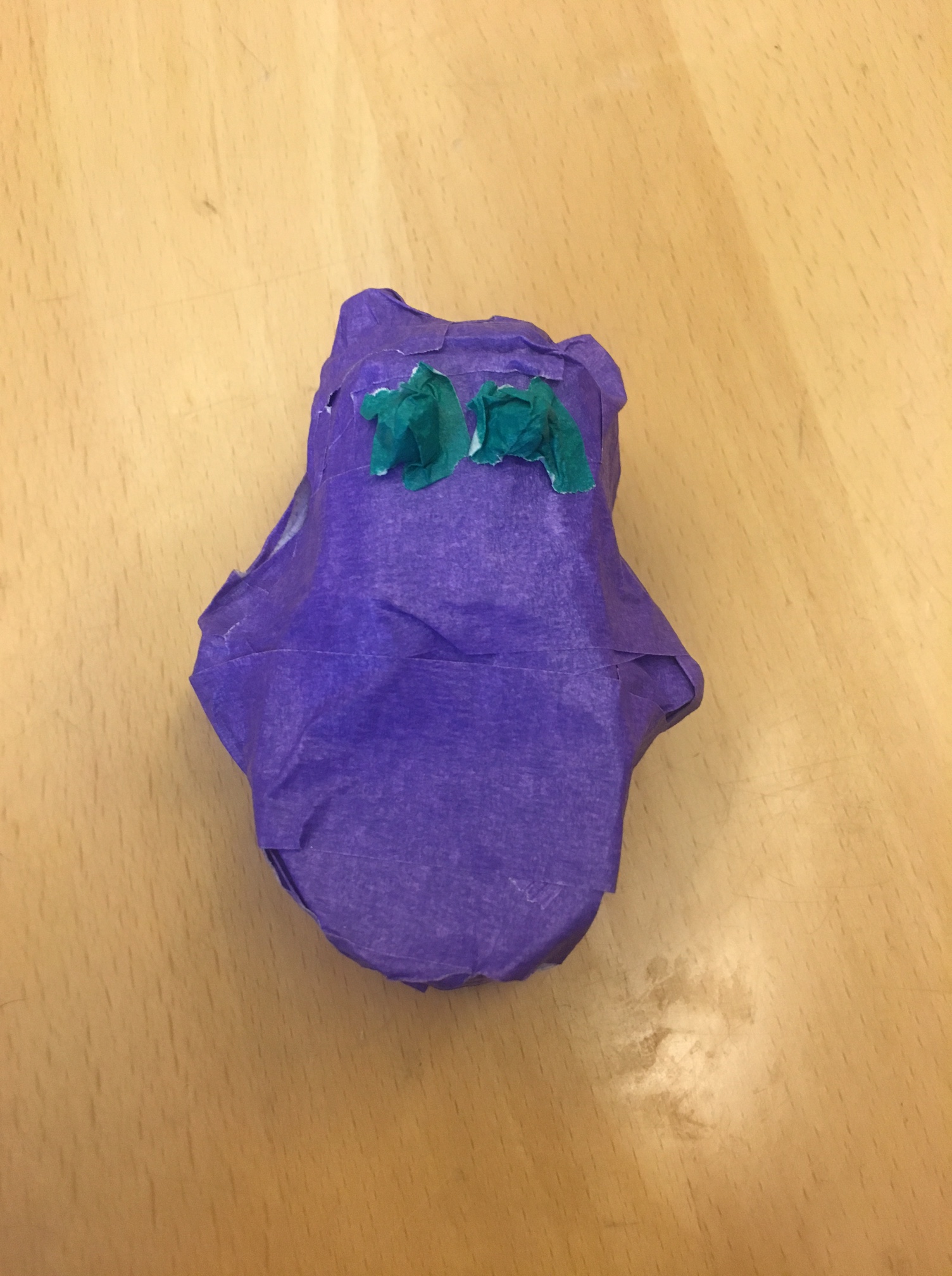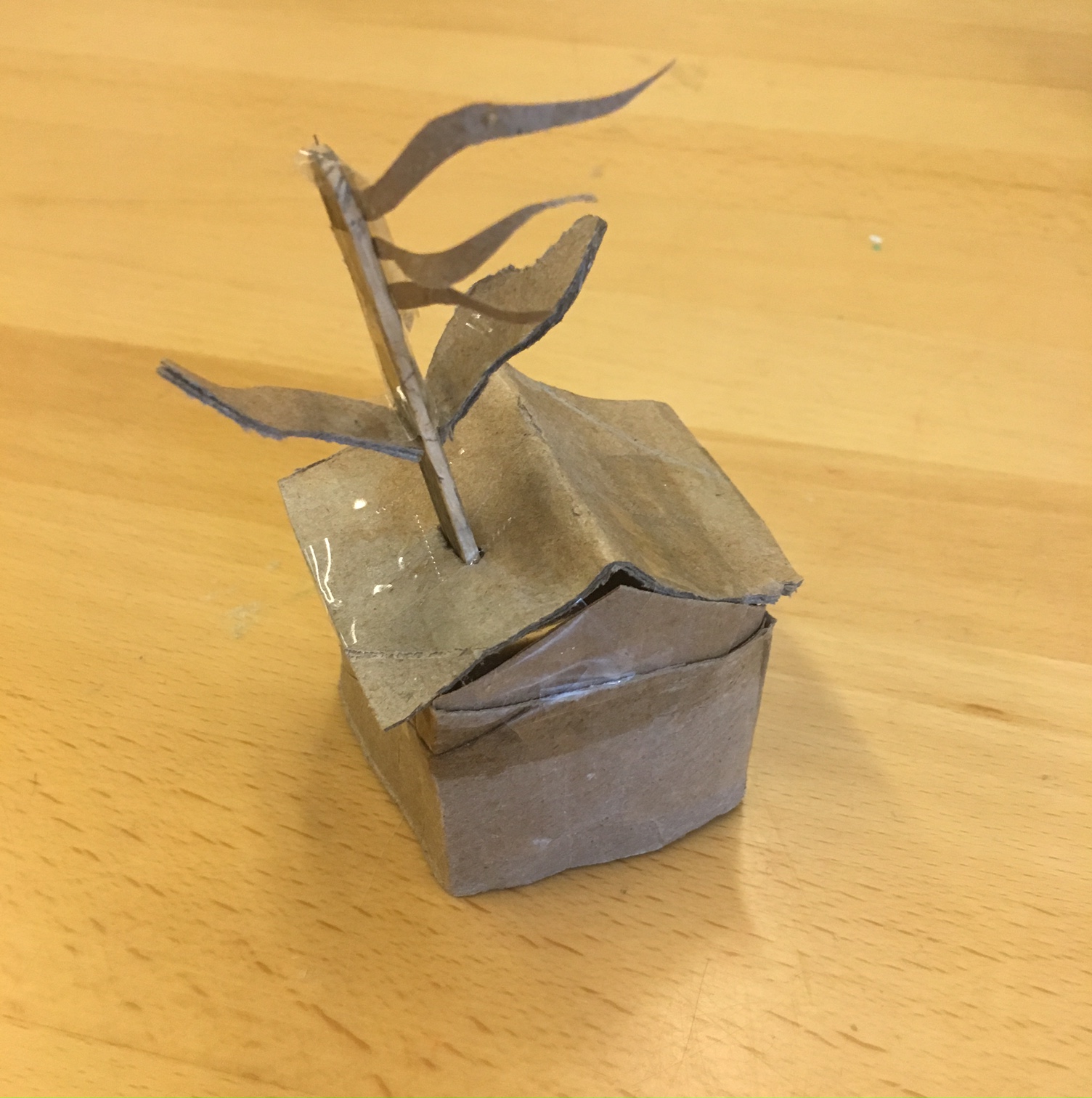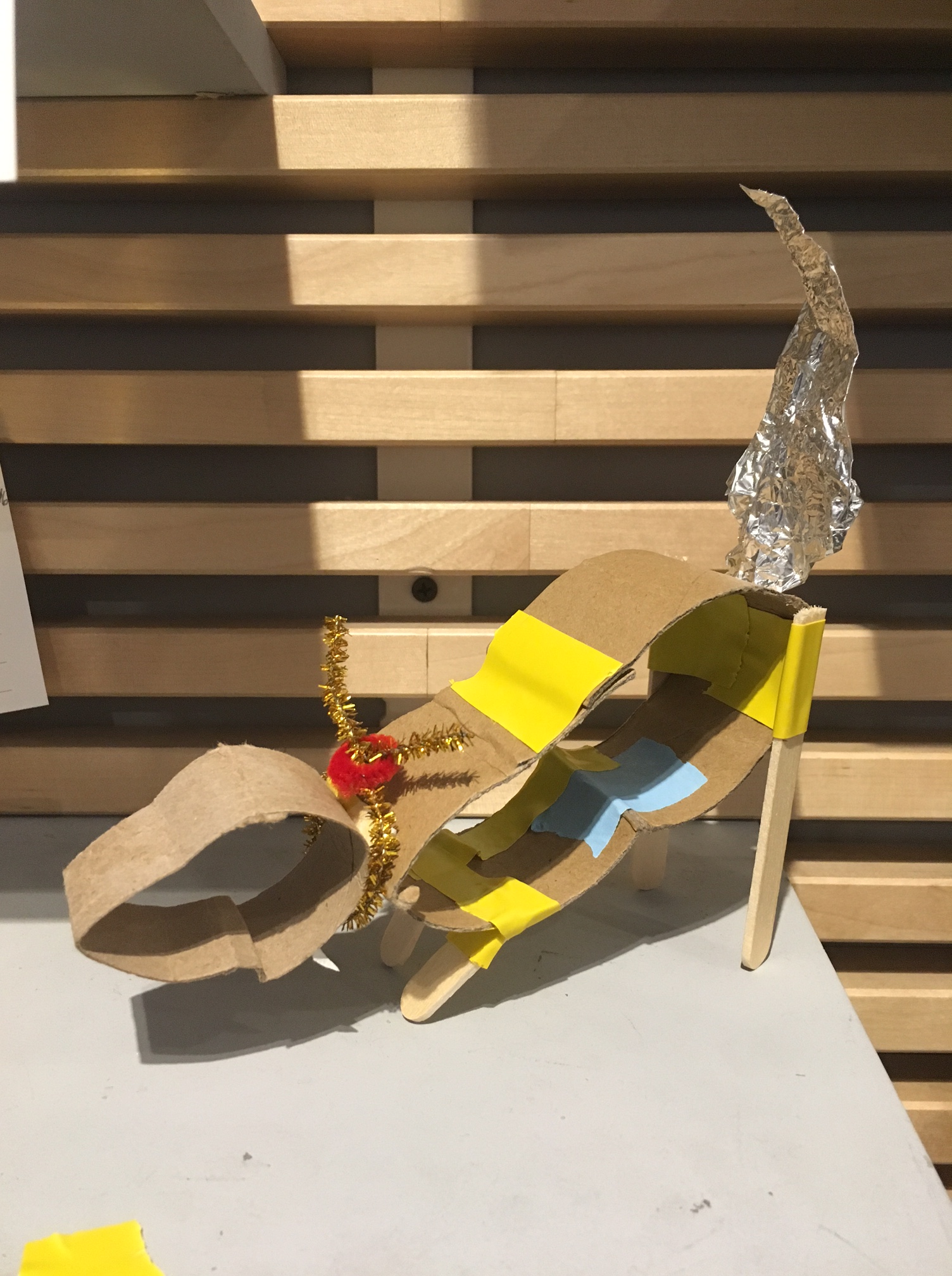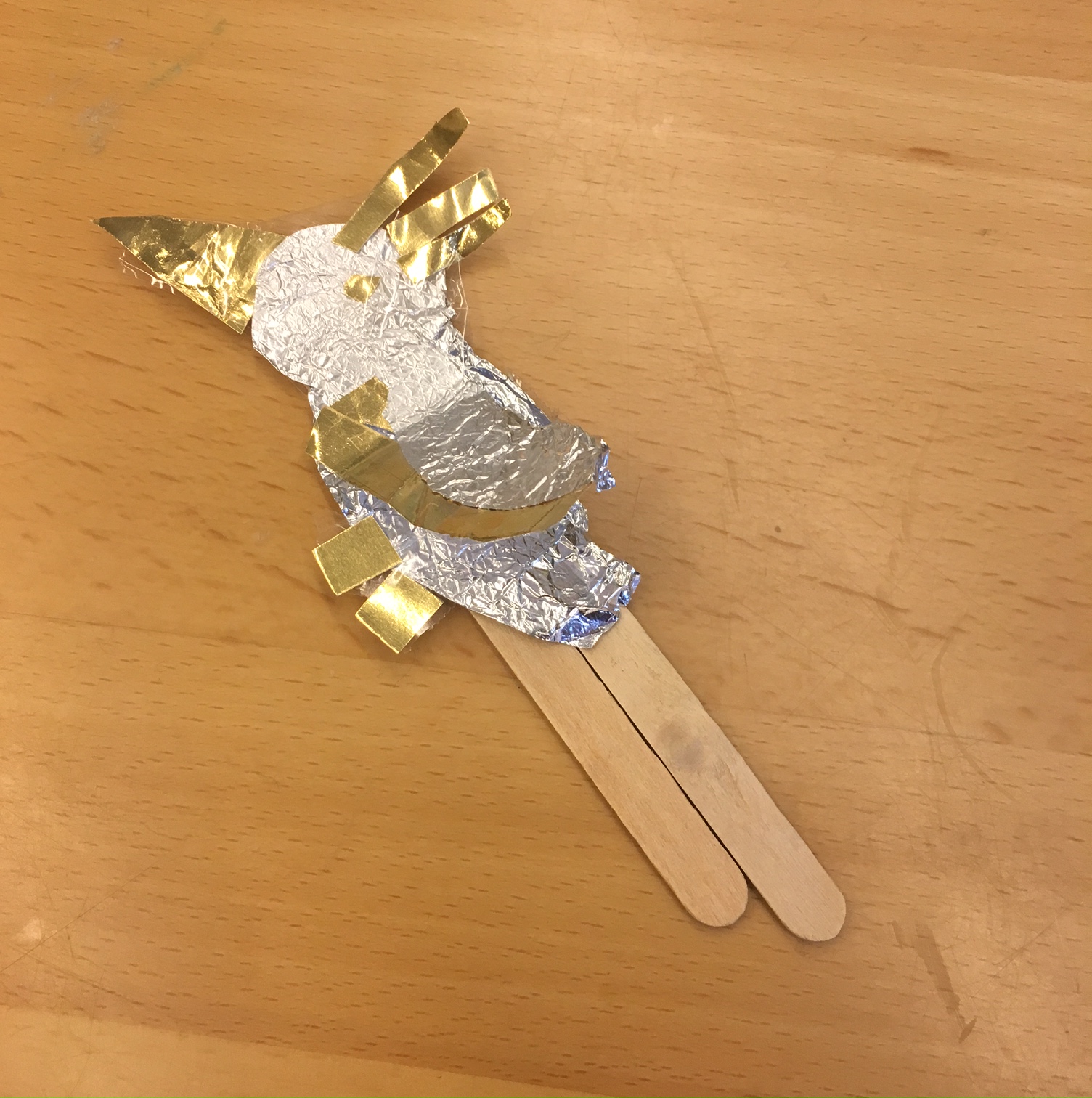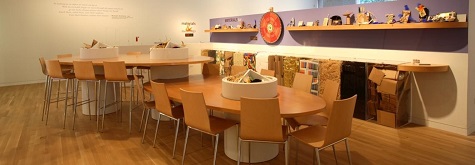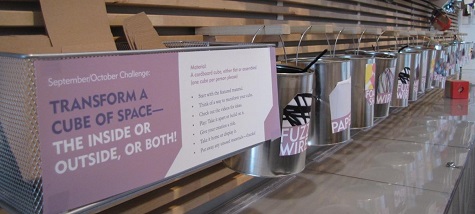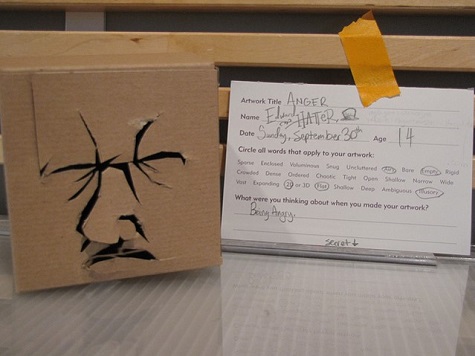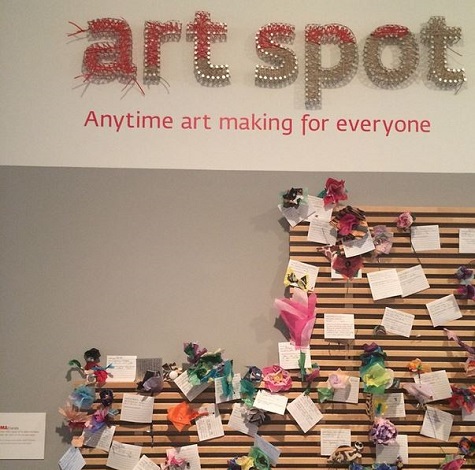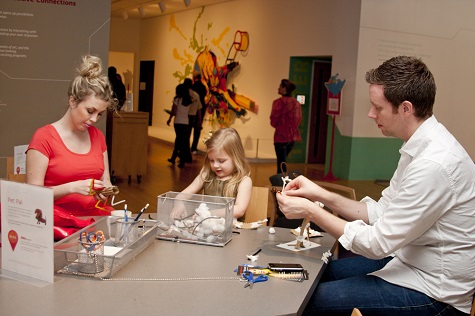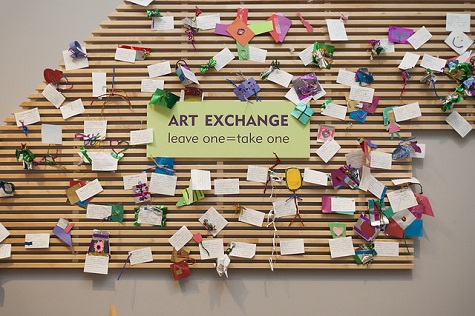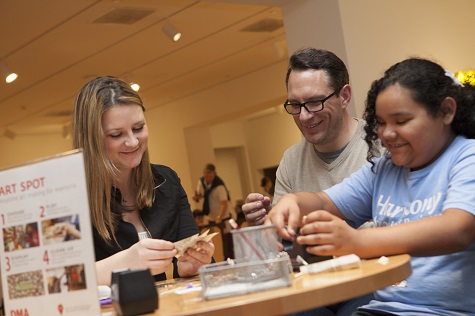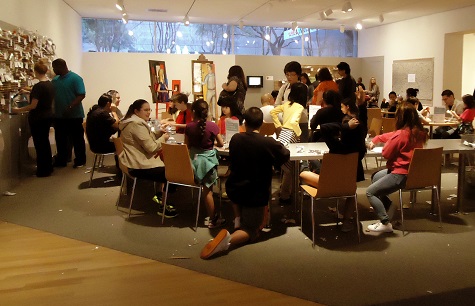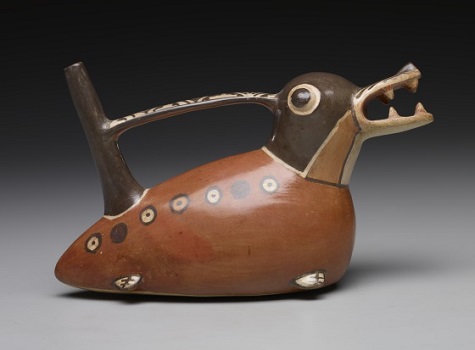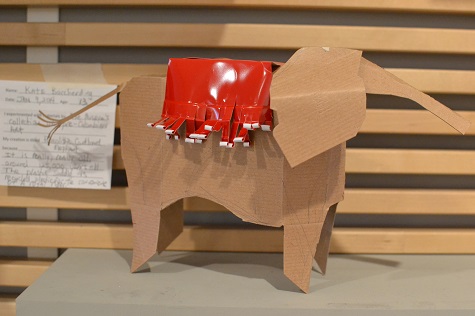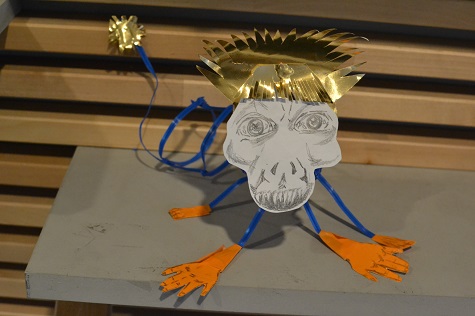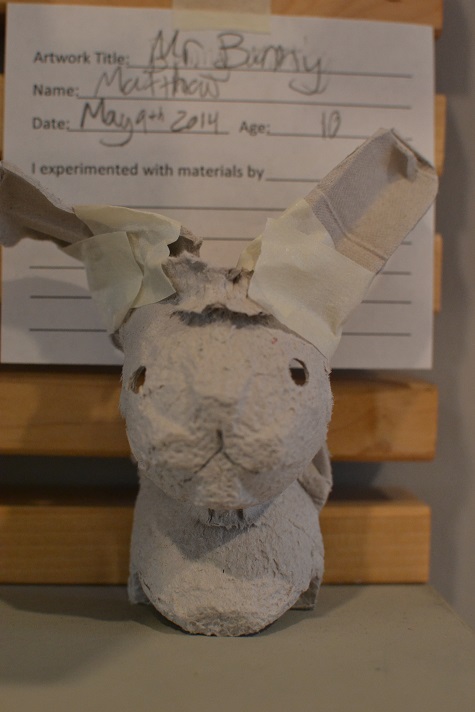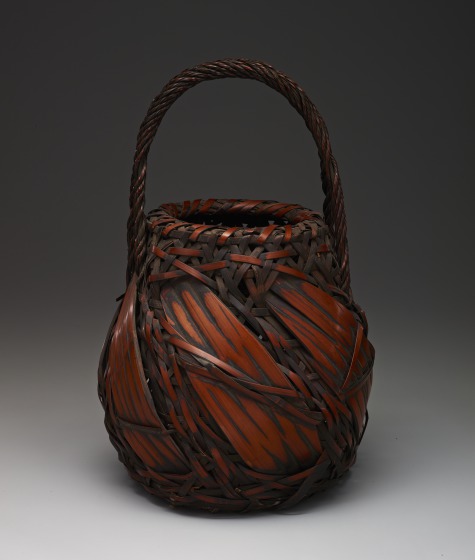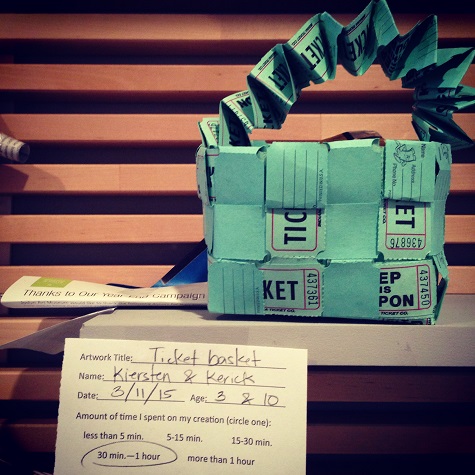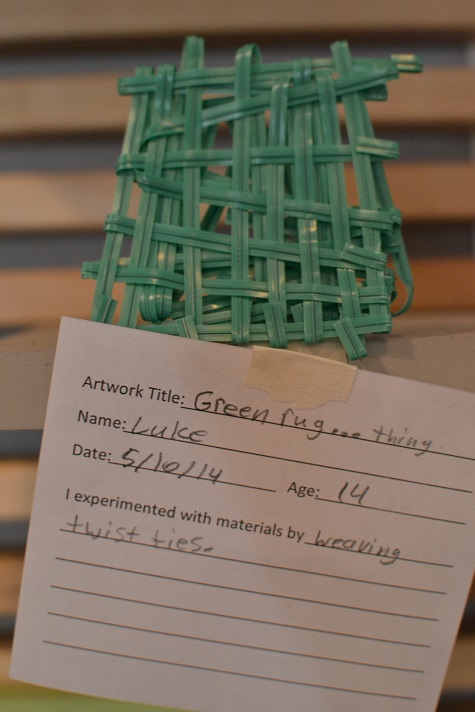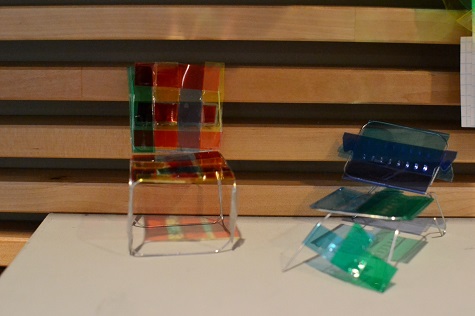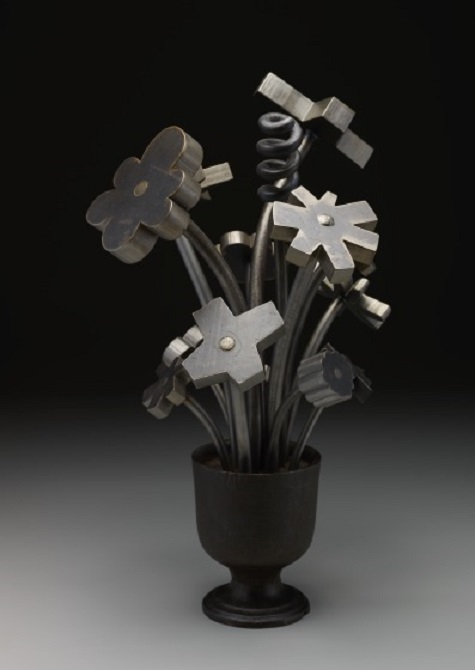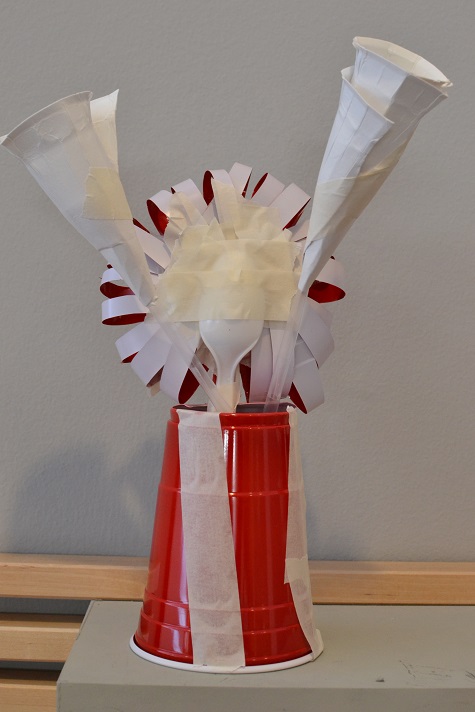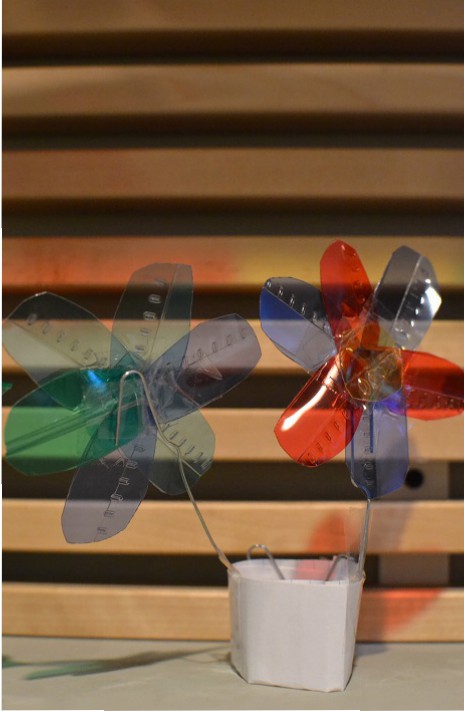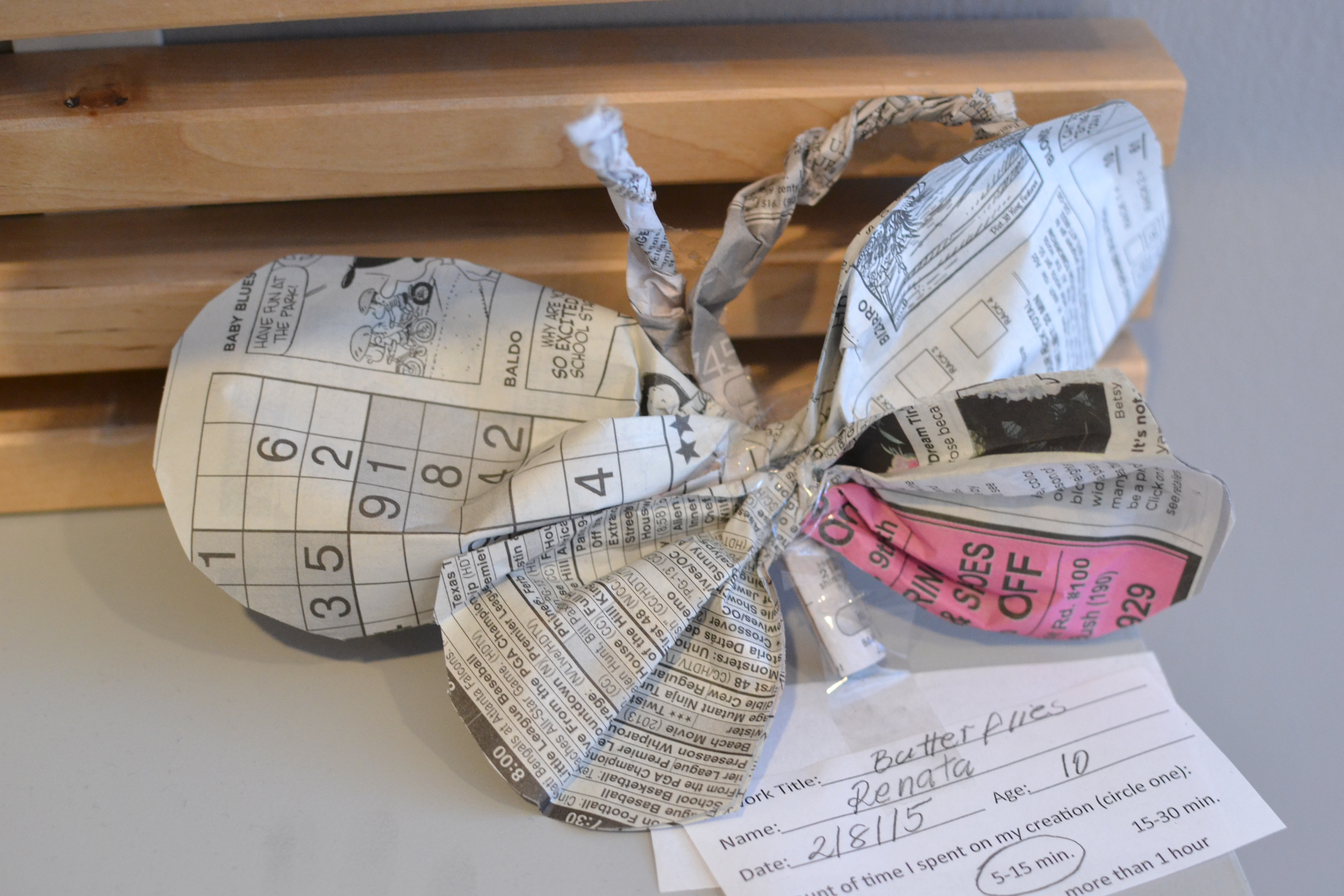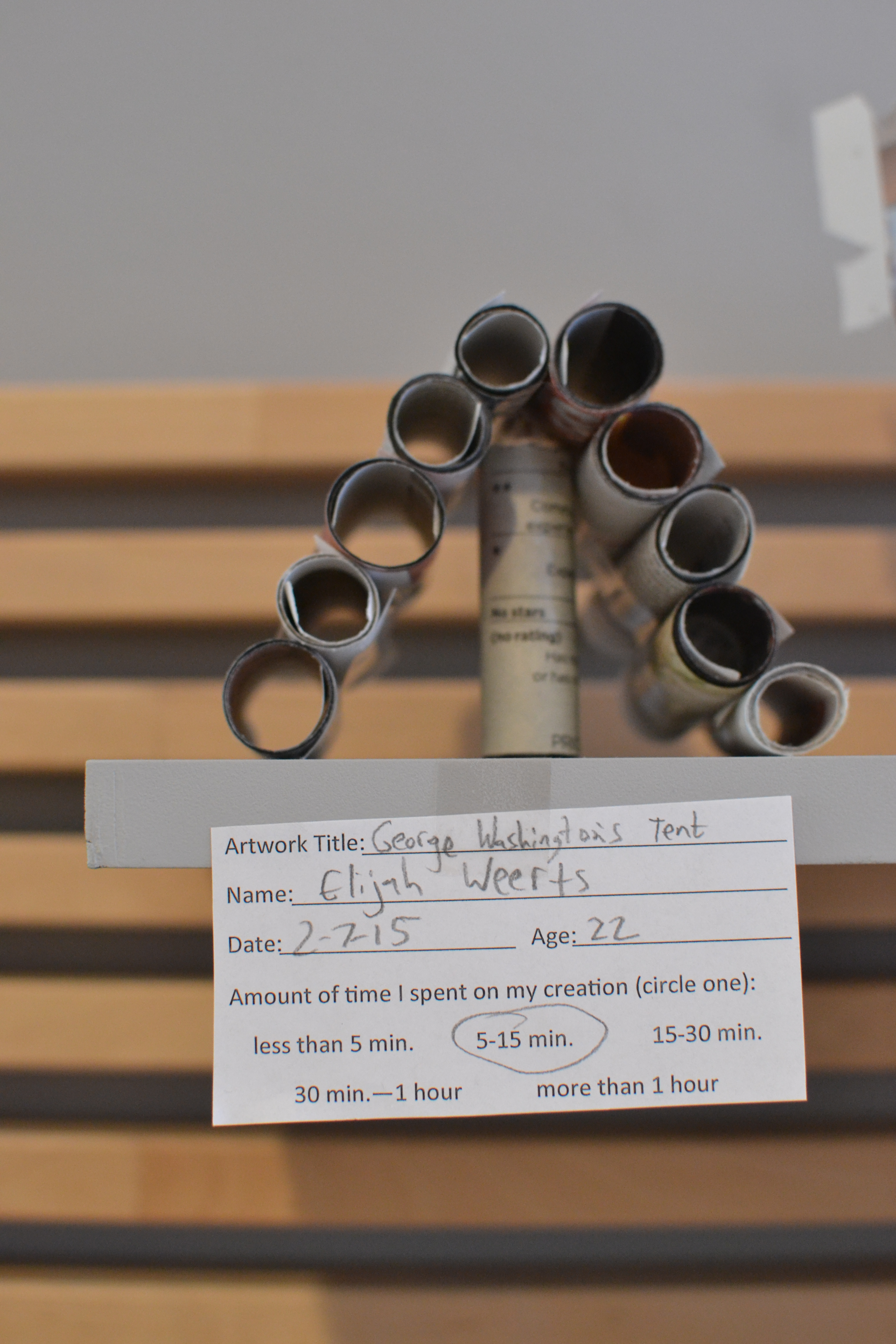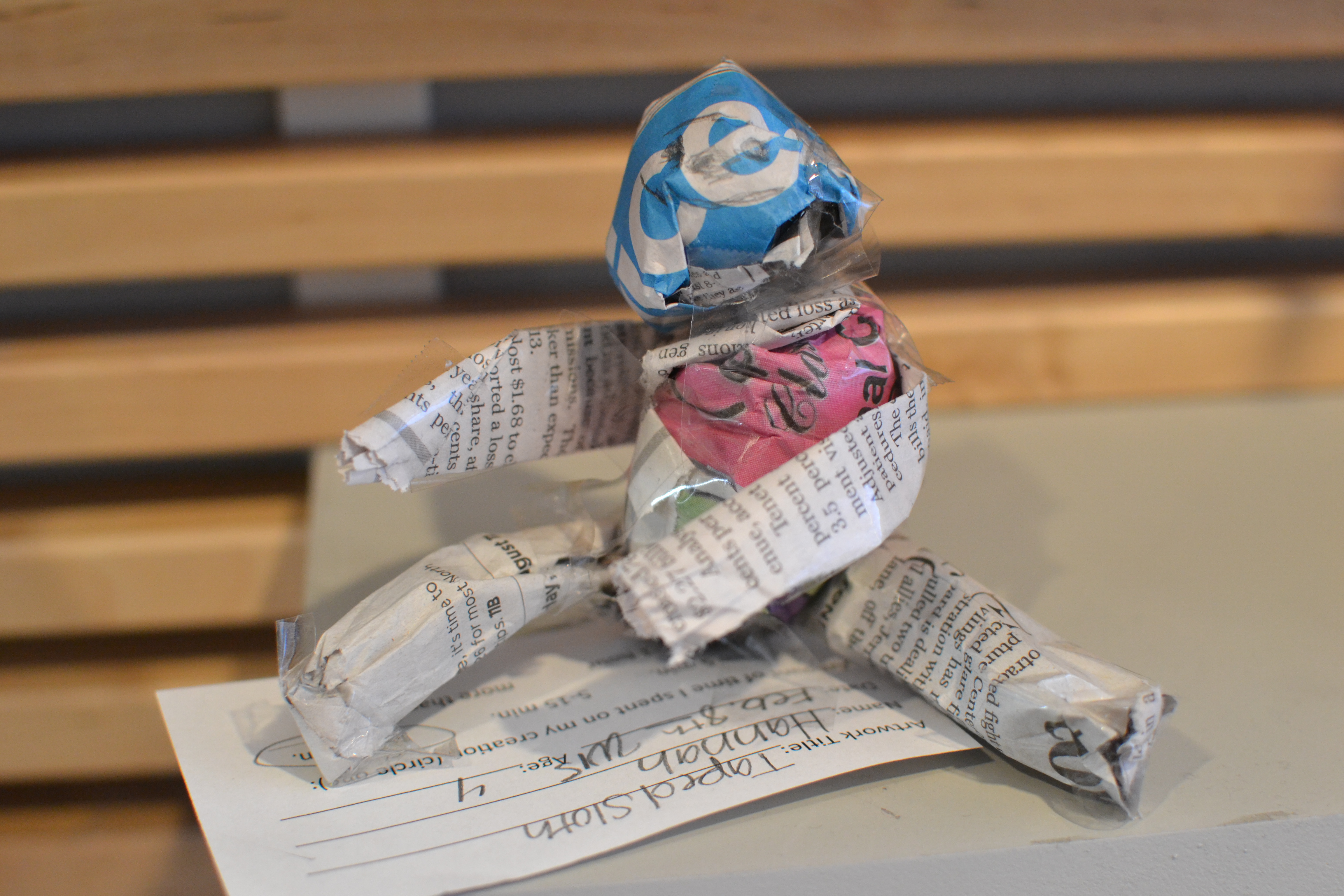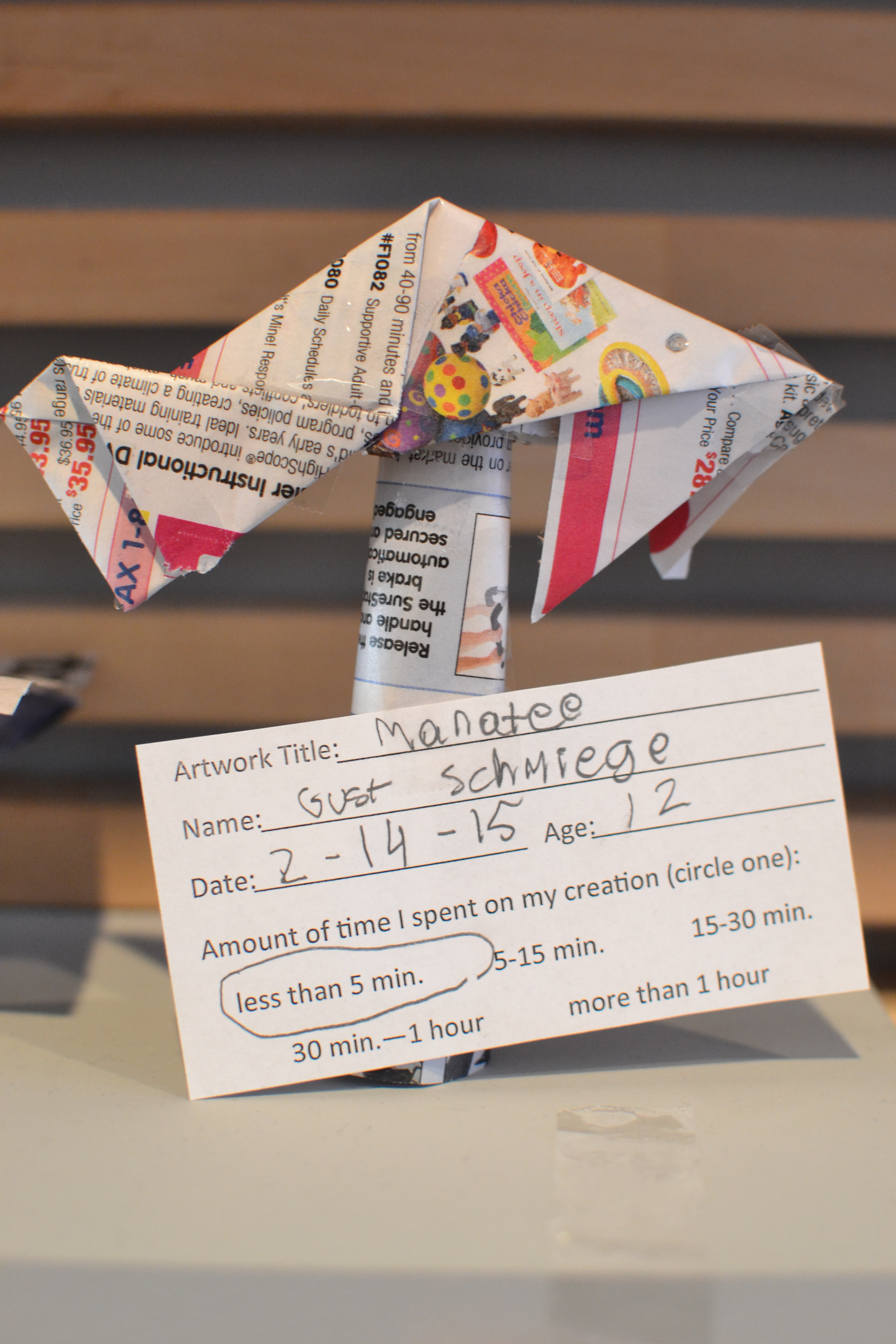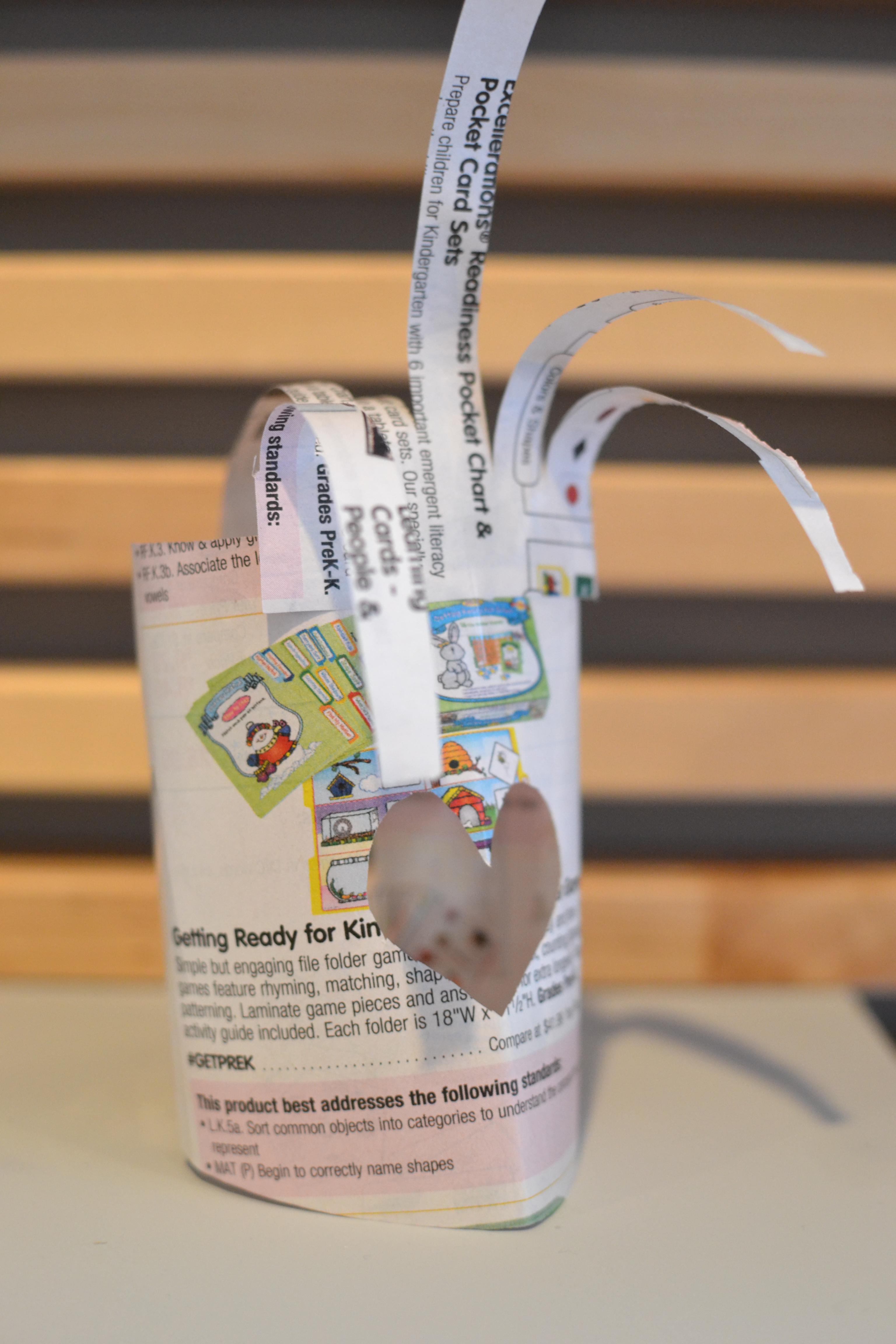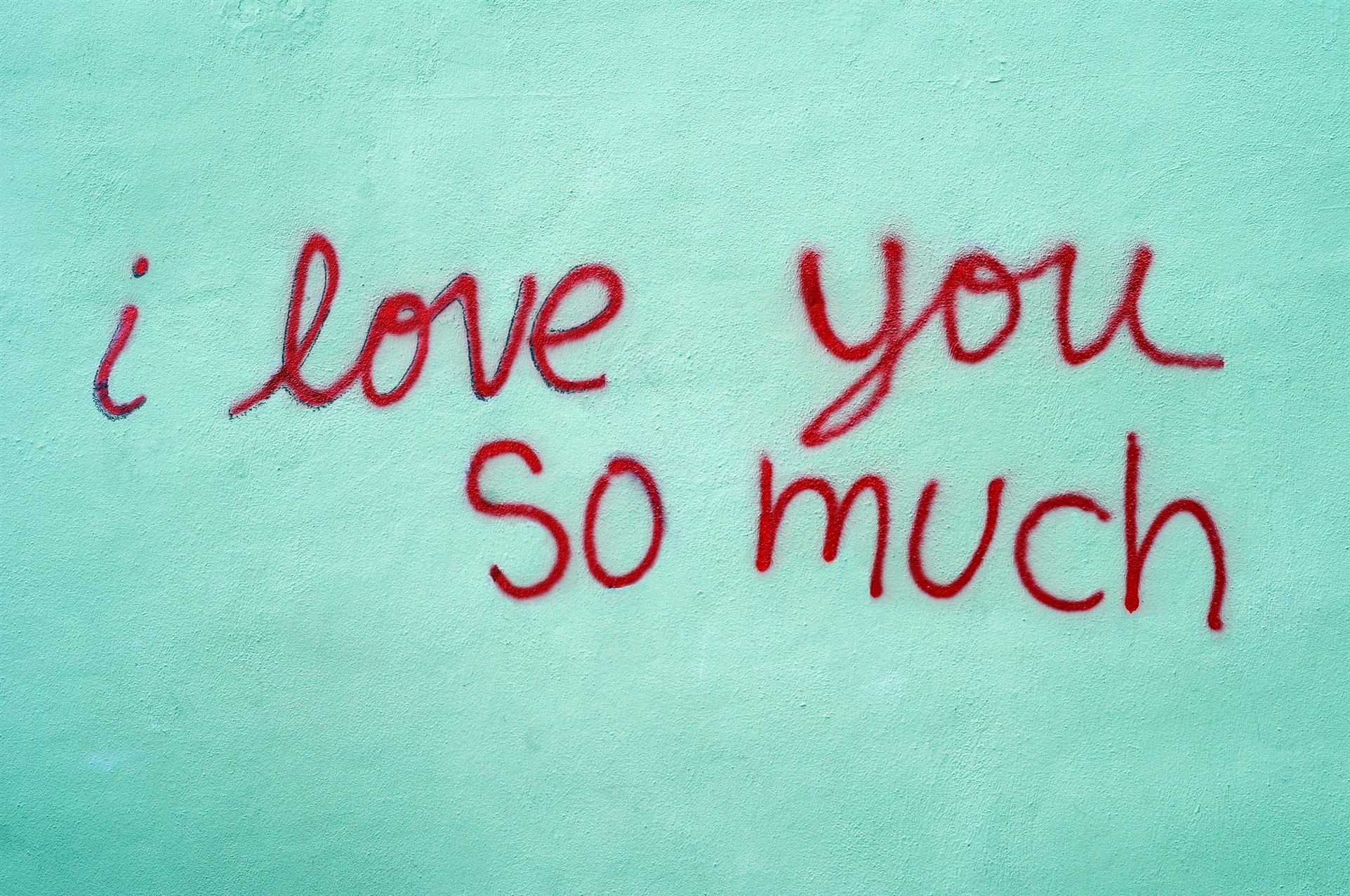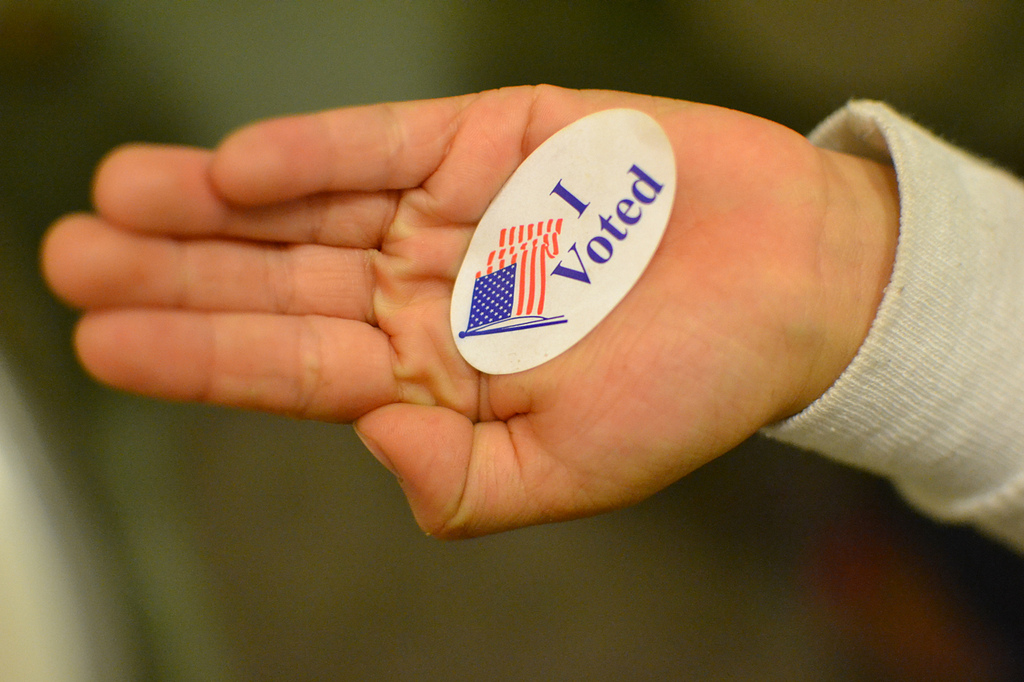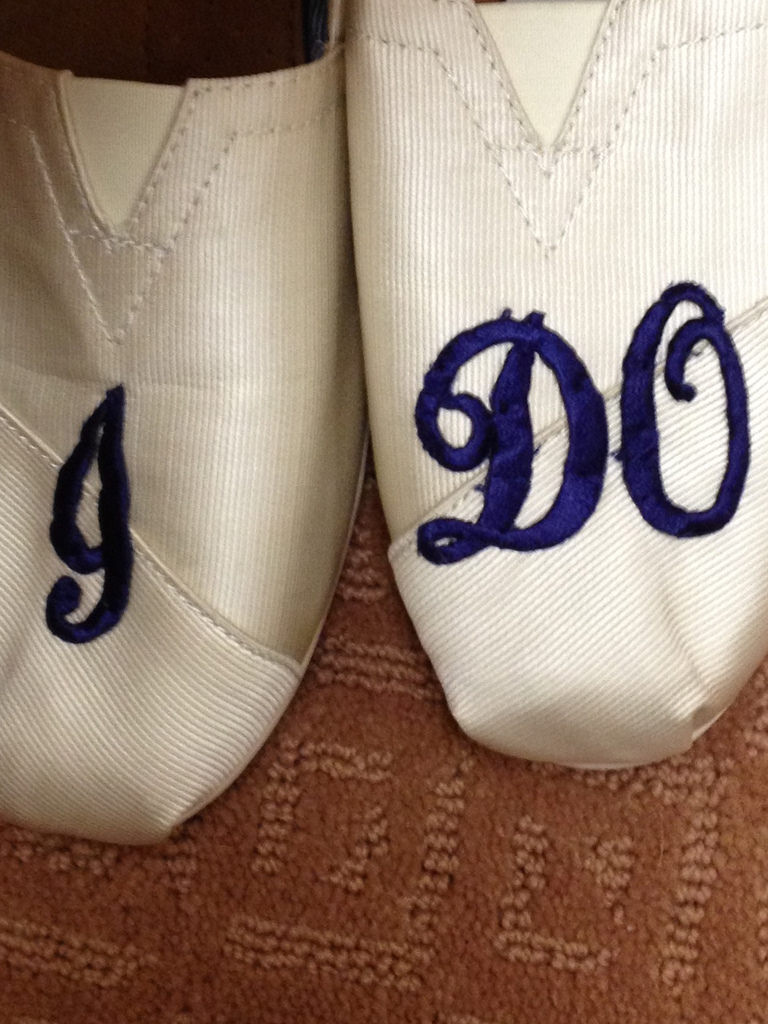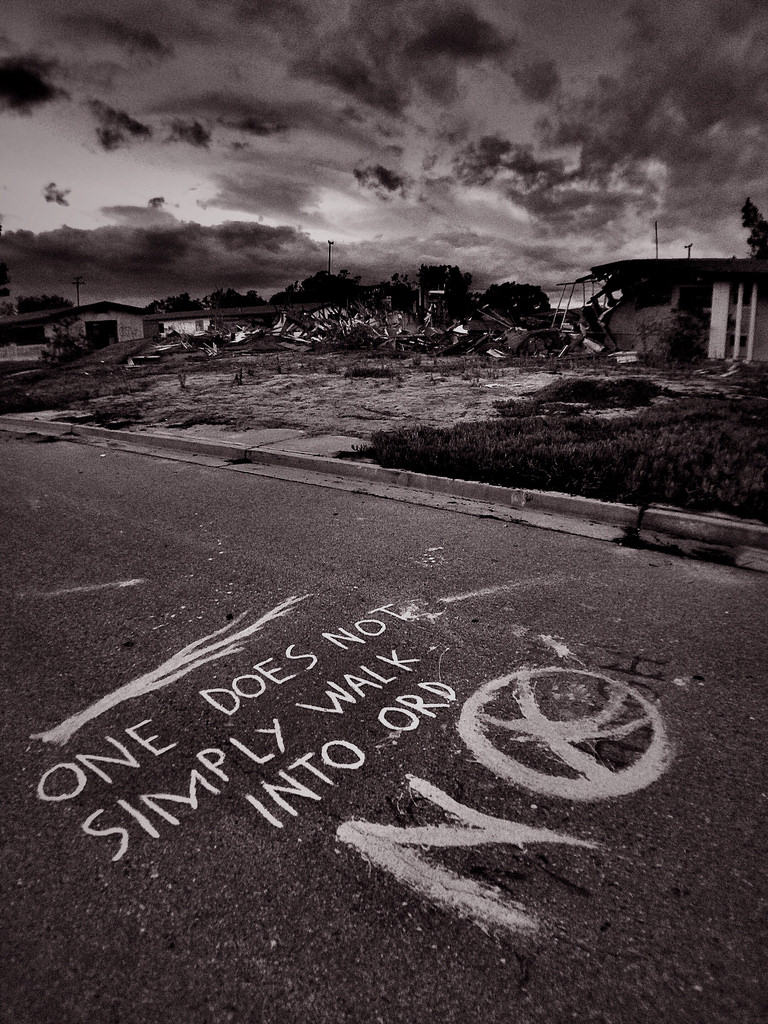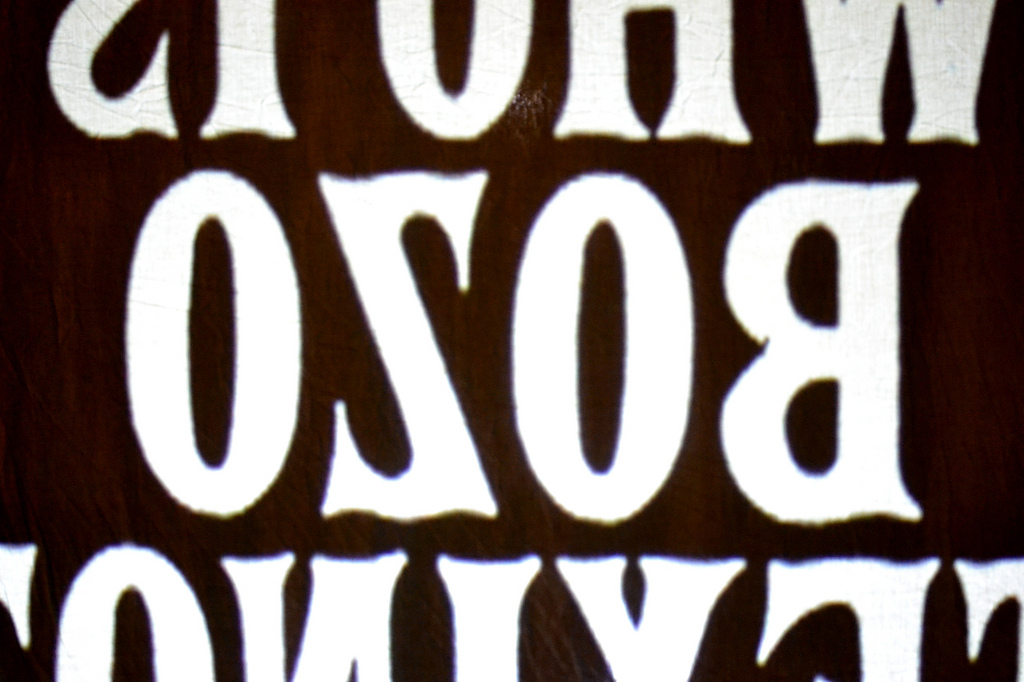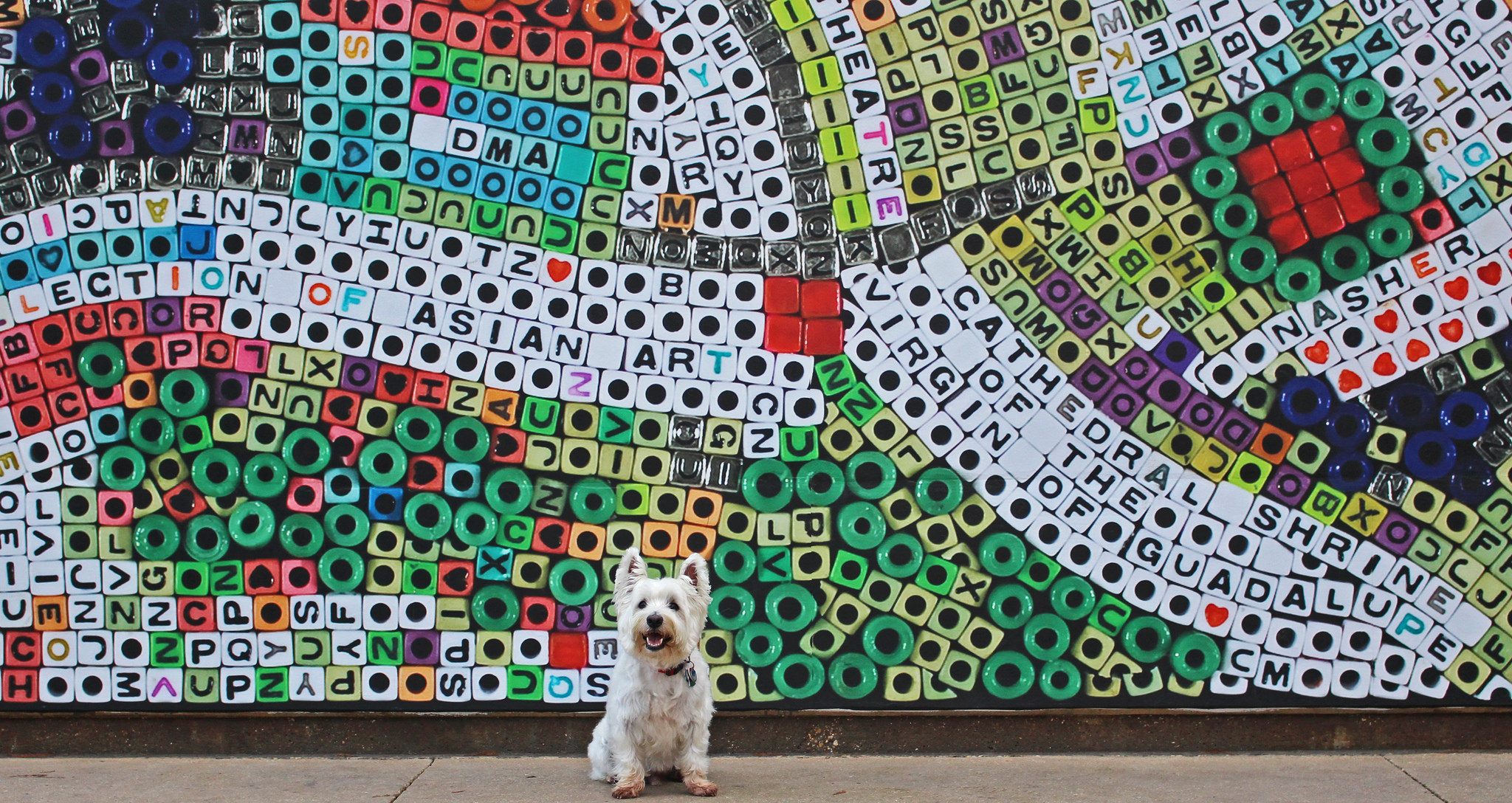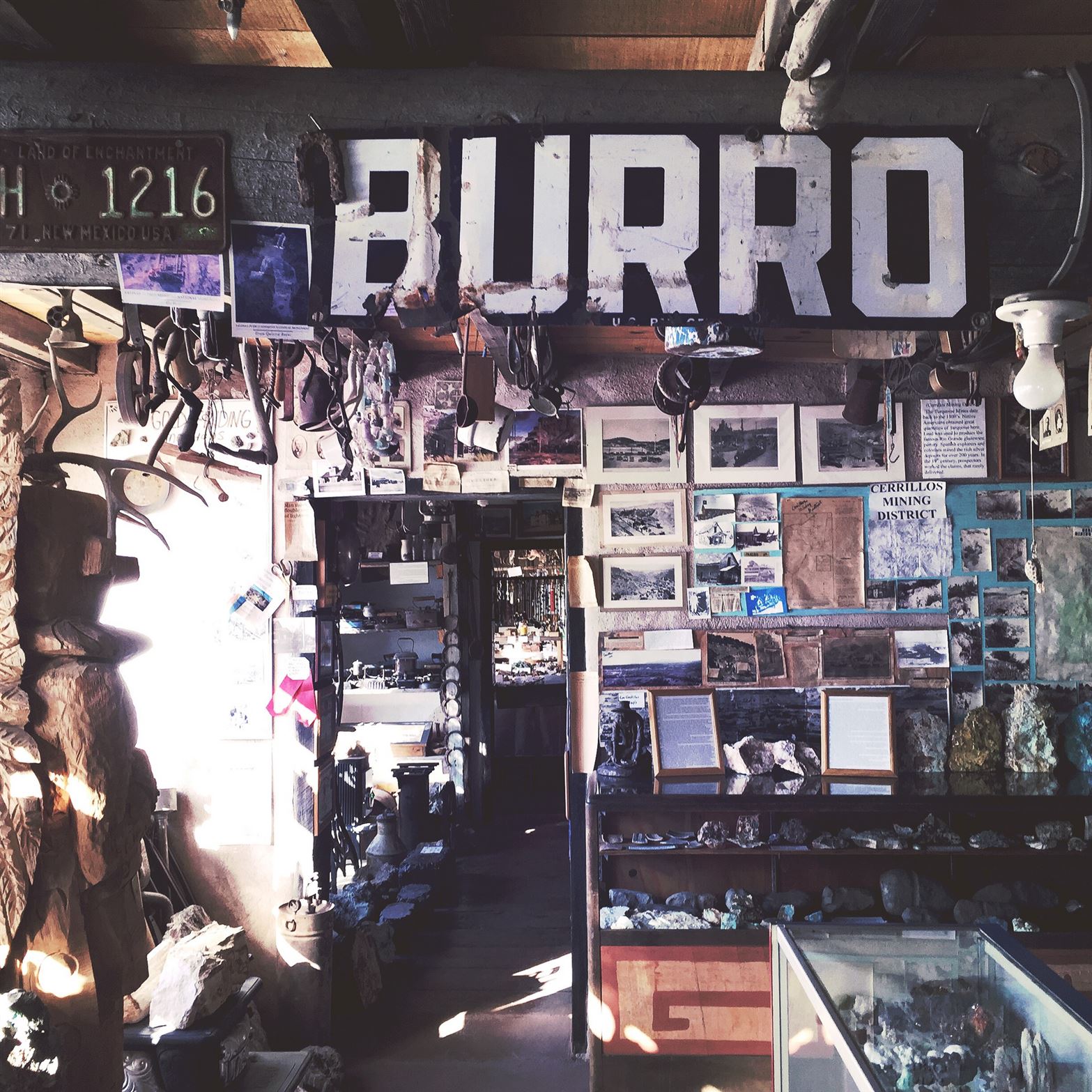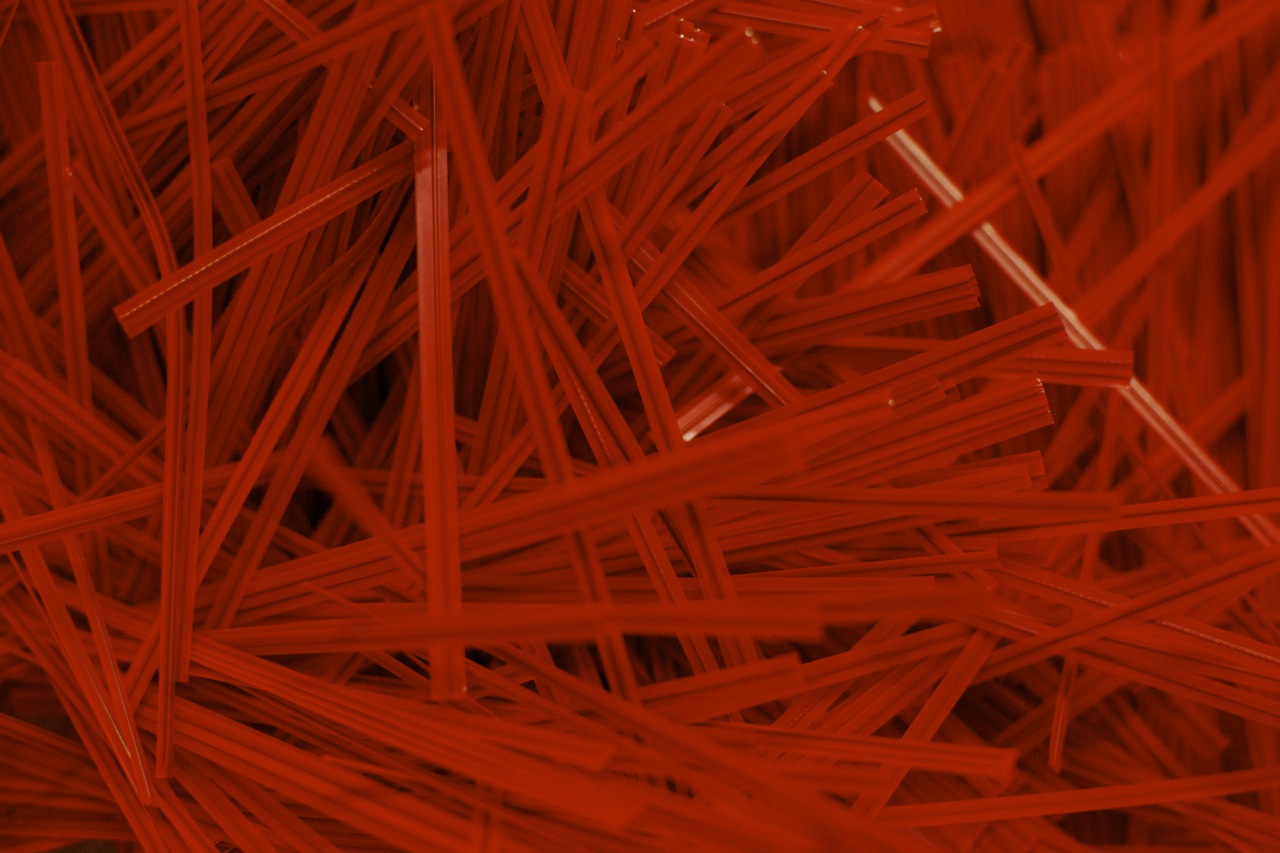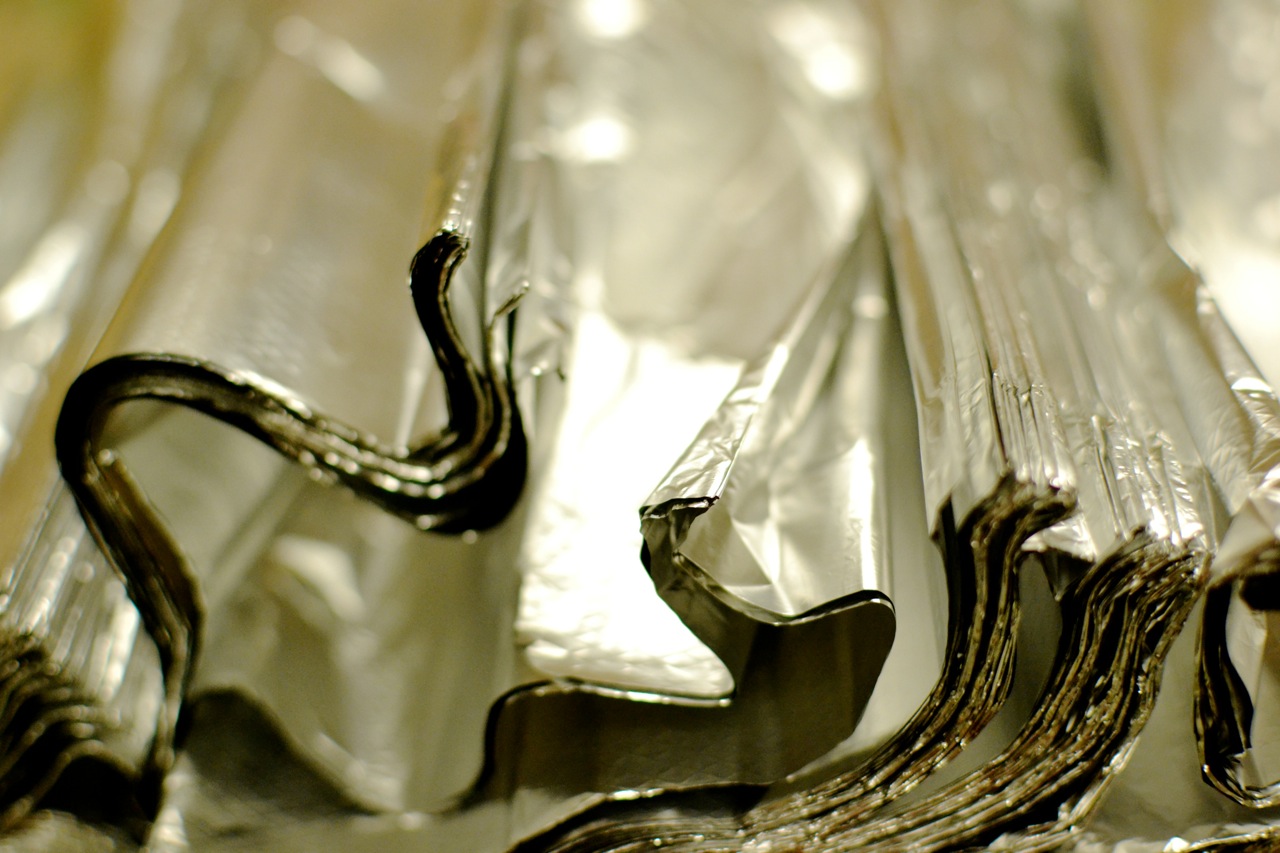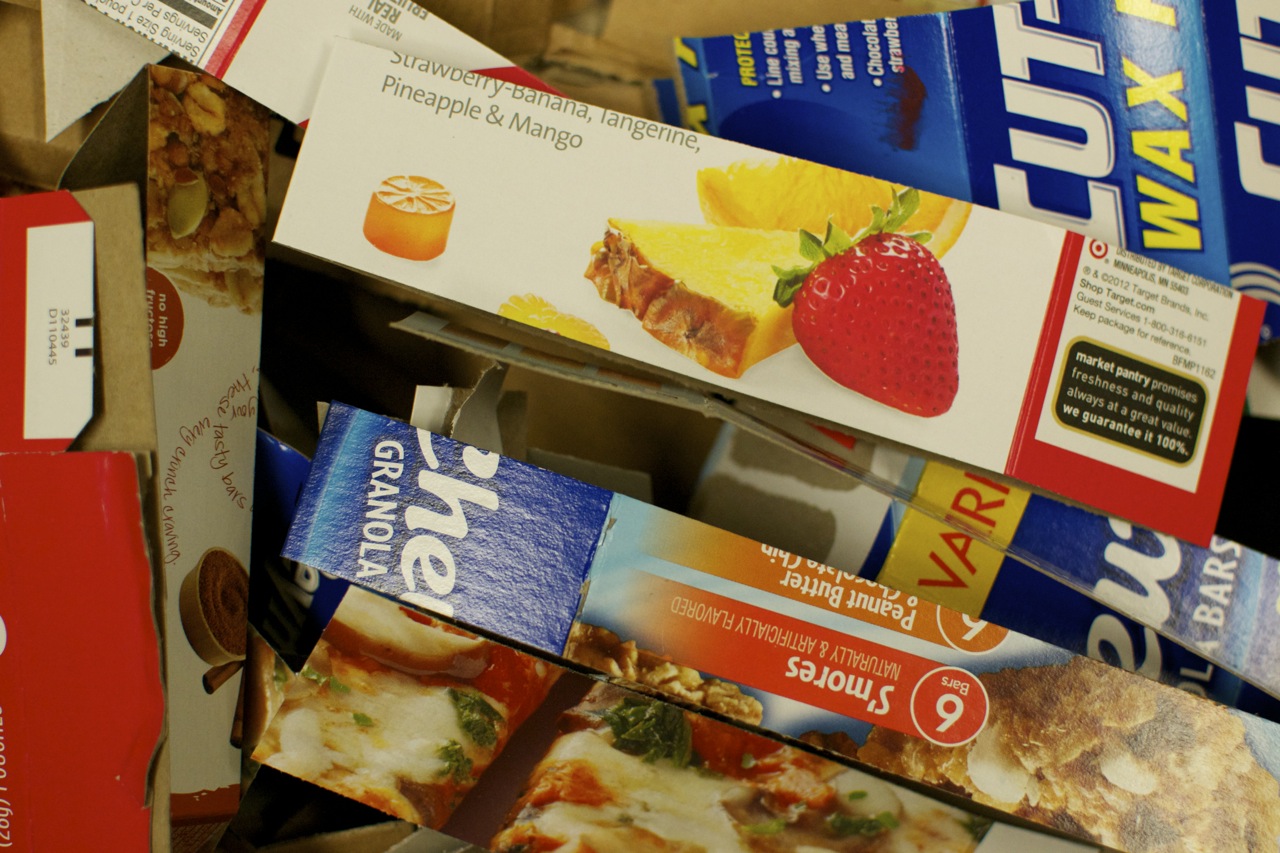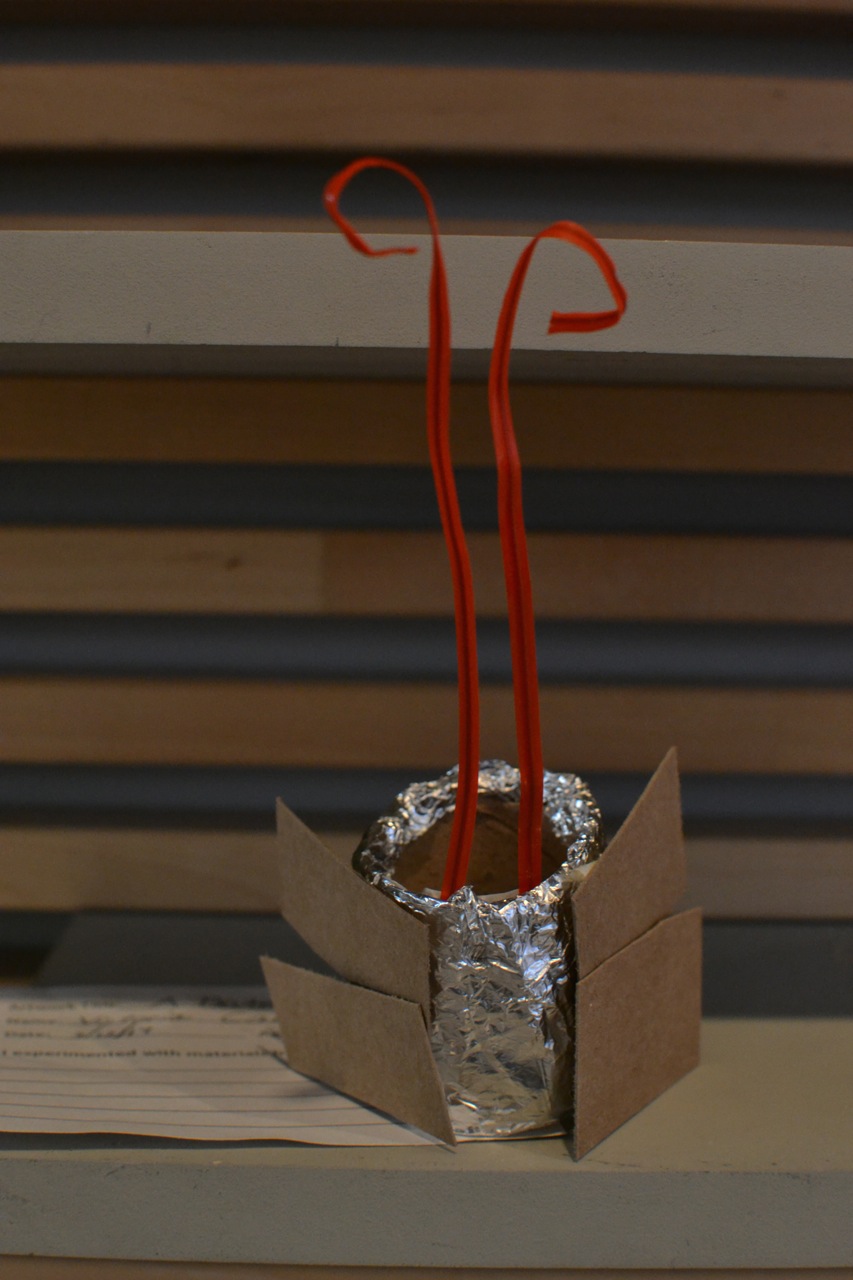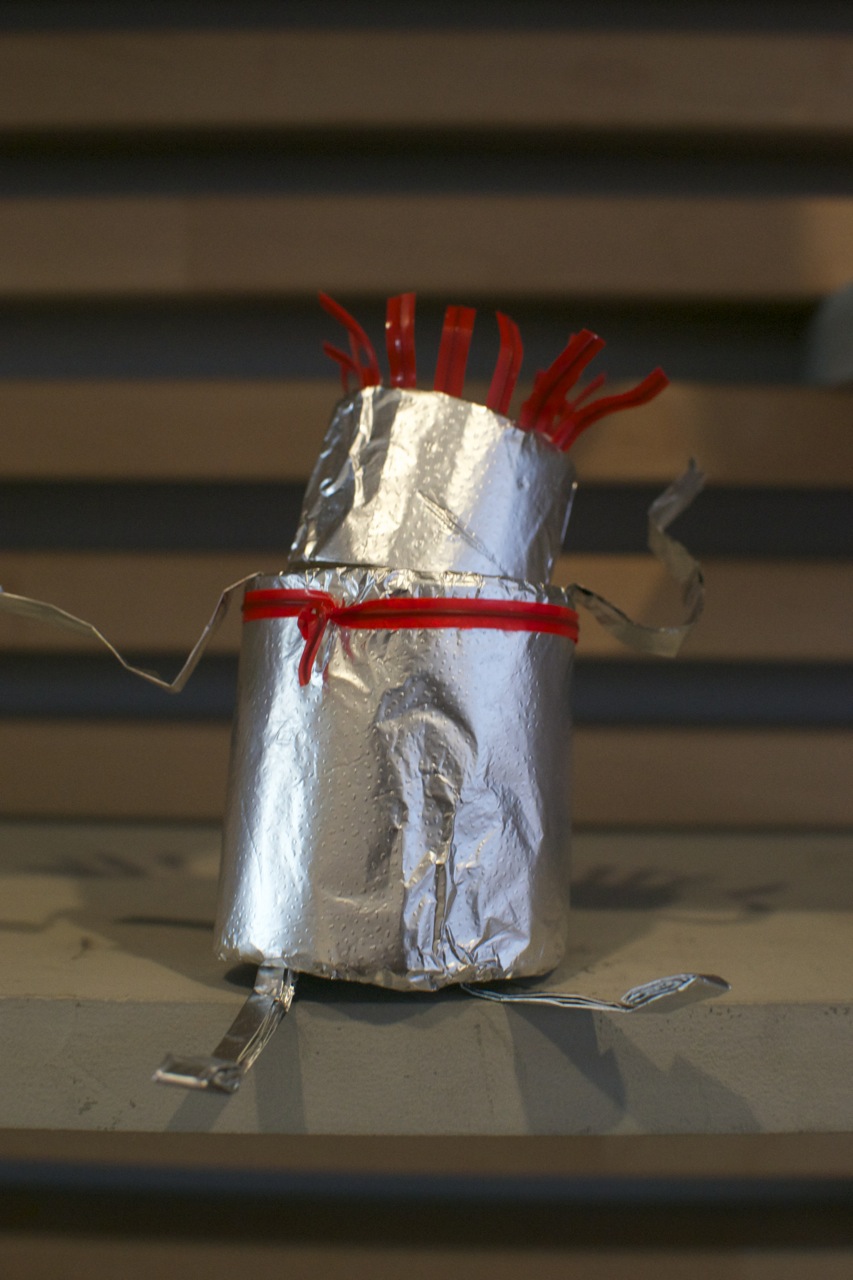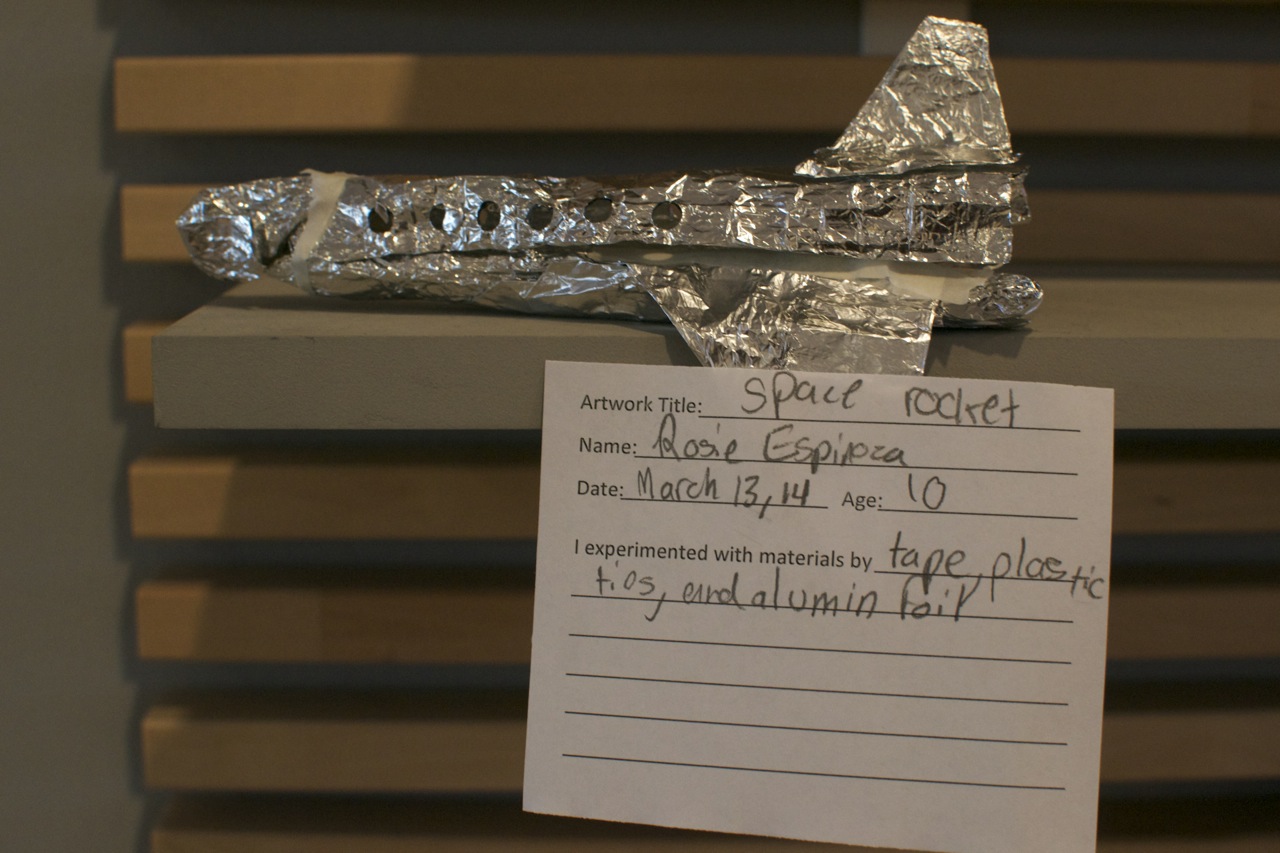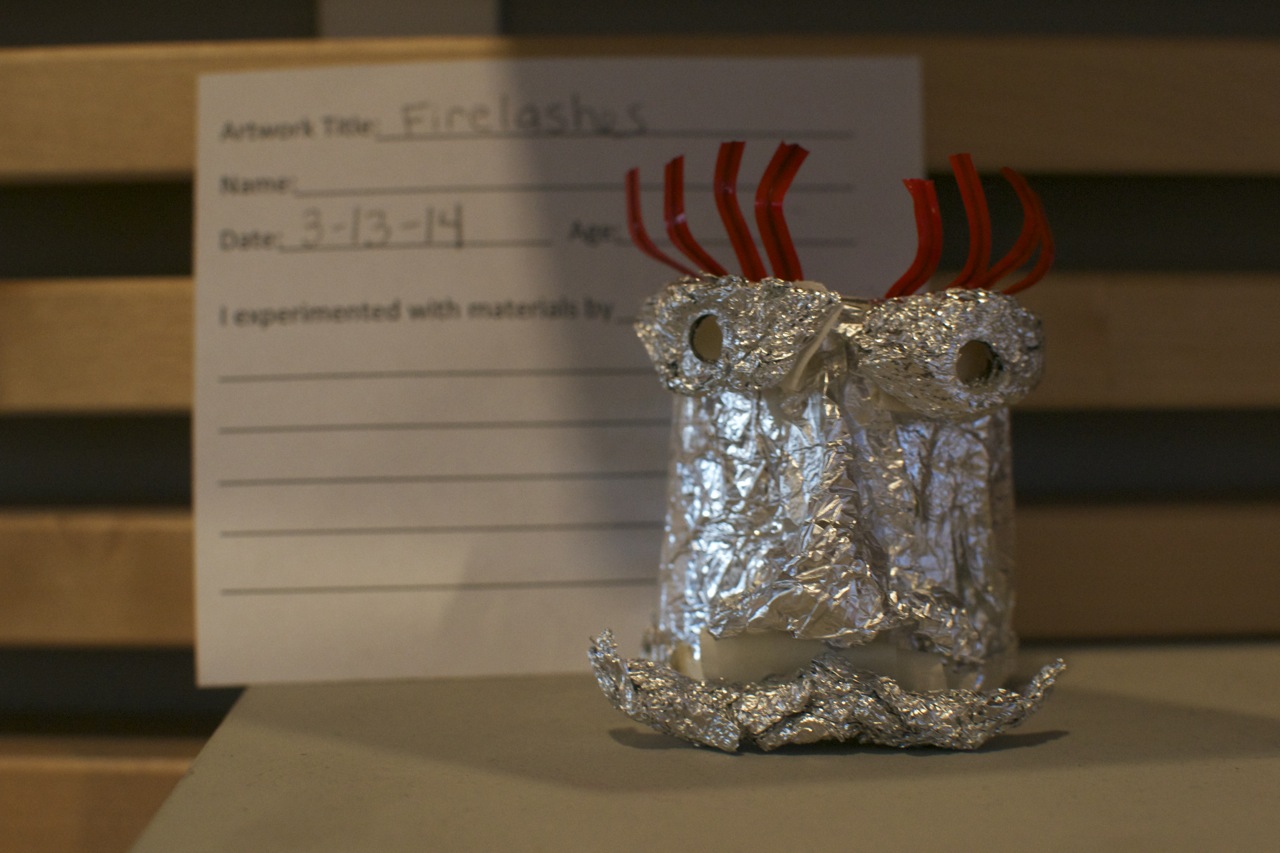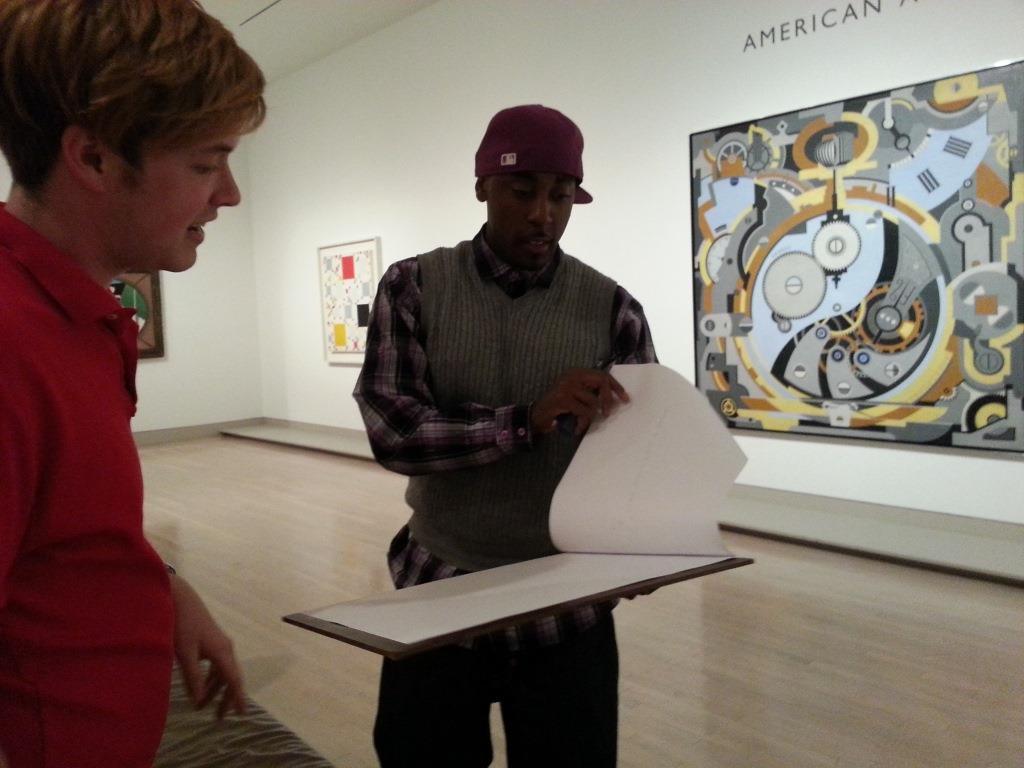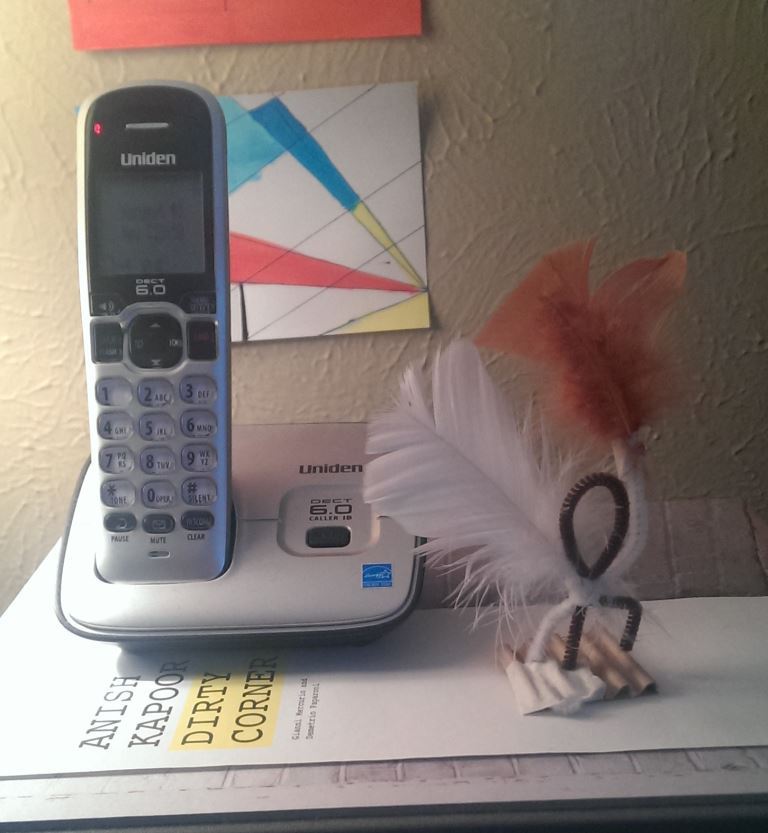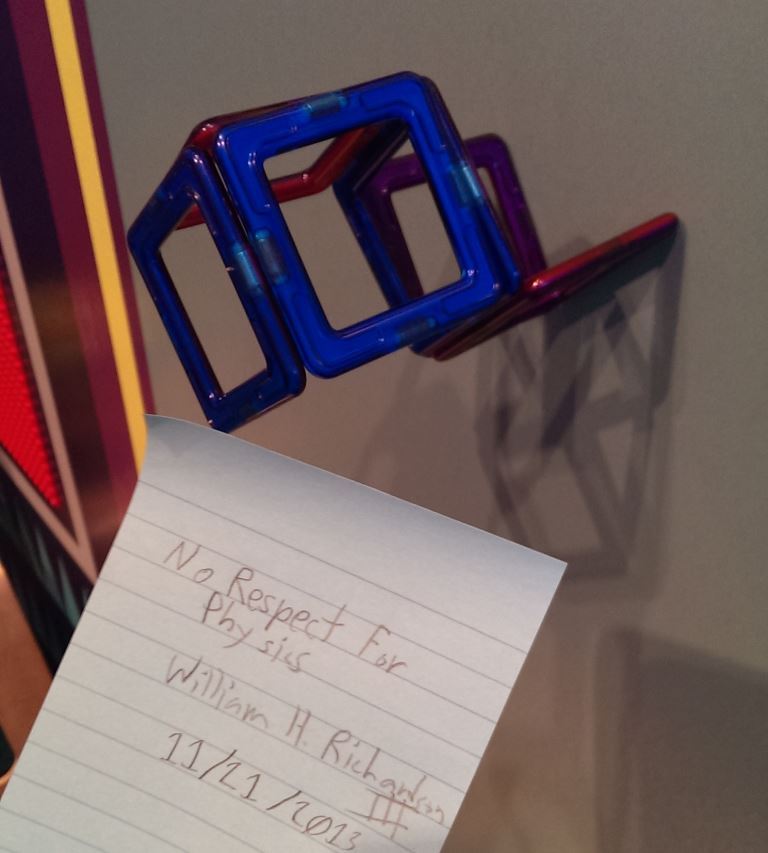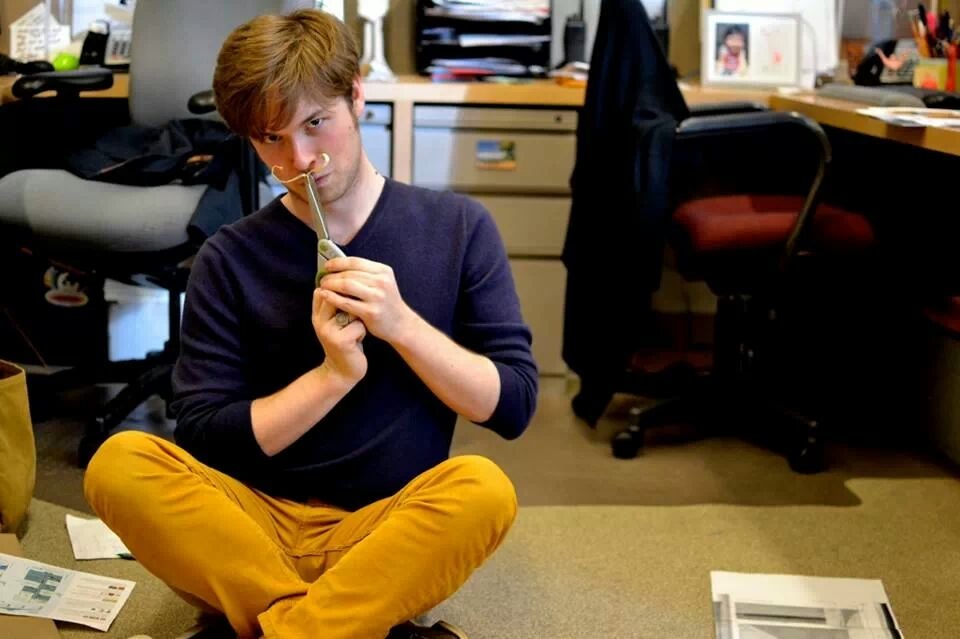The Center for Creative Connections (C3) staff was fortunate to receive help from two high school students this summer. Sophie Anthony, a rising senior at Booker T. Washington High School for the Performing and Visual Arts, spent eight weeks working with us through the Mayor’s Intern Fellows Program. Chloe Barreau will be a junior at the Chinese International School in Hong Kong. She worked with C3 during a month-long visit with family. Below are some of their experiences from this summer.
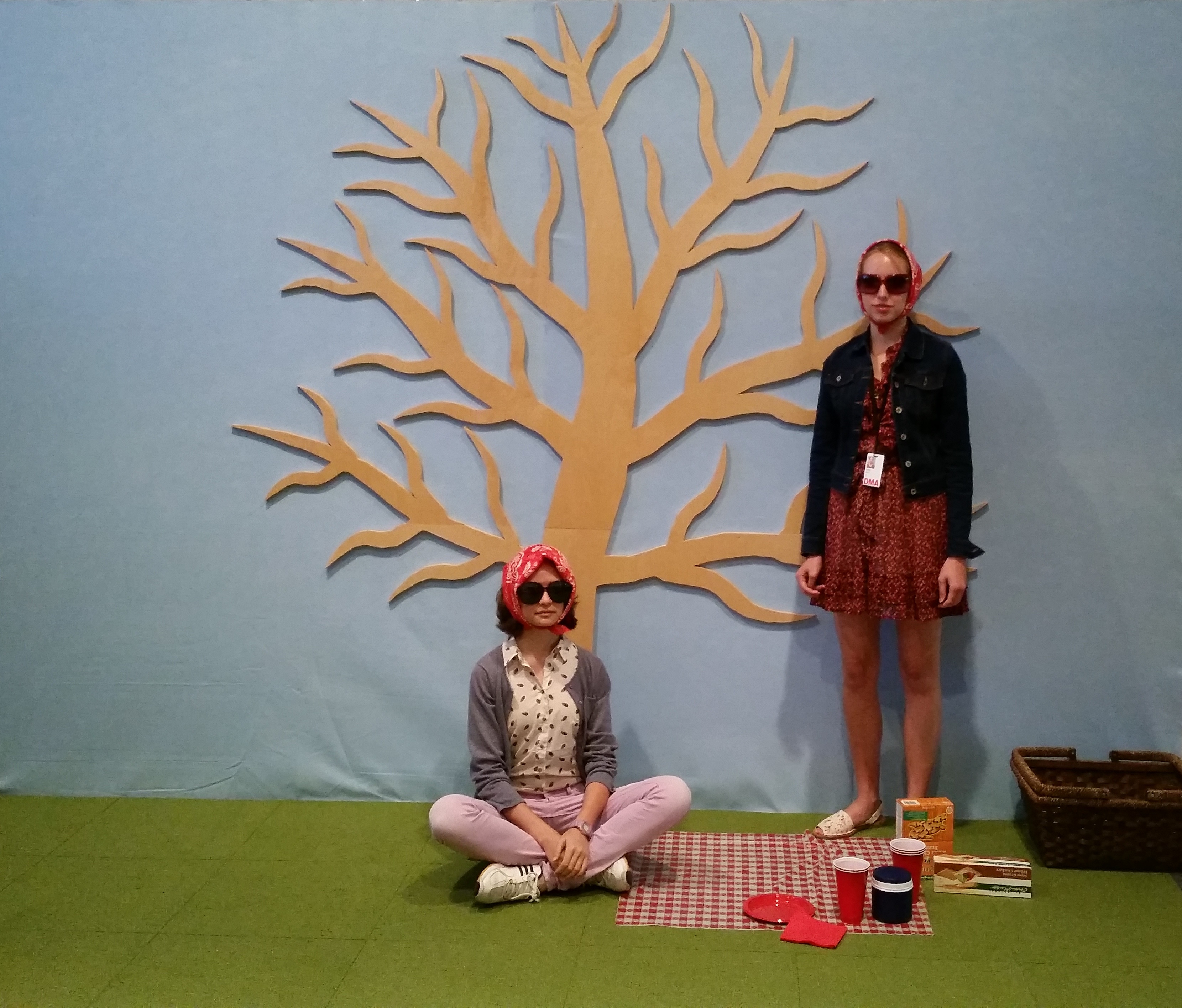
Sophie and Chloe served as the first models for a photo backdrop that connects to Nic Nicosia’s photograph titled Vacation, currently on view in C3
Sophie:
Wow. I did not realize how fast eight weeks would fly by. My internship at the DMA has been amazing — art-filled and action-packed. Through the Mayor’s Intern Fellows Program, I got a behind-the-scenes peek into the day-to-day running of the biggest (and still expanding) art museum in town. What a thrill! As a high school art student, it was exciting just to be in the same building as some of the beautiful and breathtaking masterpieces housed in the Museum, not to mention the opportunity to enhance visitors’ experience with these works. Working with visitors in C3 and behind the scenes gave me the chance to assist and interact with regular art patrons and newcomers alike, as well as see firsthand the DMA’s commitment to art education and visitor participation.
A lot of my time spent as a C3 intern was, of course, spent in C3! C3 is a hotspot for most Museum visitors — nearly everyone who enters is excited by the relaxed and hands-on atmosphere, and leaves with their own Art Spot creation. An extension of the C3 atmosphere is the Pop-up Art Spot, a cart filled with activities that moves through the galleries on a weekly basis. It allows museum-goers a chance to participate with works of art more closely and see things they might not have noticed before. Both C3 and the Pop-up Art Spot were a lot of fun because I was able to chat with visitors and learn their thoughts and perceptions on art pieces and the DMA. I met people who had been going to the DMA for the past twenty years and people who had never visited an art museum before. But it wasn’t all conversations — there are always plenty of supplies to be prepped!
One of my favorite projects was the July Late Night Creations activity, the “Curious Case of the Mystery Painting.” Chloe and I made and designed the materials for the activity and wrote (not to mention re-wrote) the instructions for this mystery-themed collaborative art project. We chose the two “mystery” paintings that would be recreated and then, after much multiplication, we gridded out the artworks into two-inch squares, which would be “clues” that participants would recreate on bigger pieces of cardboard. Slowly, piece of cardboard by piece of cardboard, the paintings would be revealed. The hardest part of creating this project was writing the instructions. Chloe and I quickly learned the value of one word instead of two, realizing that the shorter and more concise, the better. We wrote and rewrote numerous drafts until we eliminated all extraneous details and arrived at the instructions used during Late Night Creations. When I came to work the next day and saw the final masterpieces, I was astounded. The visitors did an amazing job in recreating the mystery paintings! Below are the activity instructions; scroll down to see the activity in progress and completed.
-
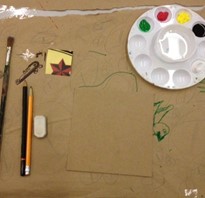
-
Gather materials
-

-
Grid out your clue and your cardboard
-
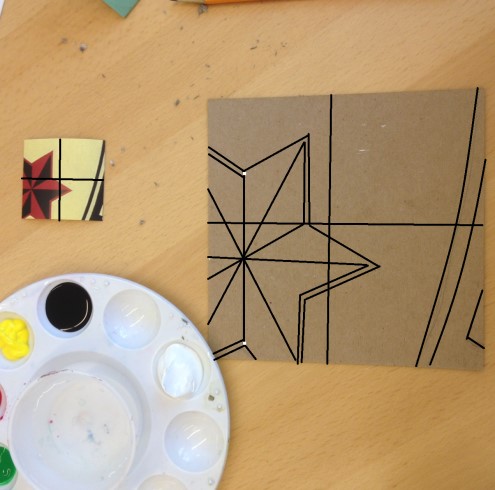
-
Draw the image on your cardboard
-
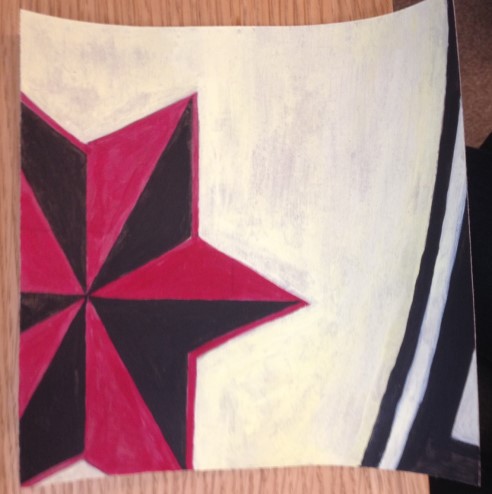
-
Paint it!
All too quickly these past eight weeks have sped by. I can’t believe how much I’ve learned, how much I’ve seen, how much I’ve done here at the DMA. My experiences have been widely varied—I now know both how to write a set of instructions for a community art project and the most efficient way of cutting cardboard for the Art Spot. I helped individuals with Alzheimer’s discuss pieces of art in Meaningful Moments and went behind the scenes to see exhibits go up and come down. I became an old pro at screenprinting T-shirts through assisting with the Design Studio summer art camp and listened as teens made soundscapes based on The Museum is History exhibition during a UA Maker Club workshop. I am so appreciative and thankful for my internship—the DMA, specifically C3, gave me a wide and varied experience in a field of work I would love to pursue. I learned so much this summer and I’m looking forward to volunteering in C3 soon!
Chloe:
My internship experience at the DMA this summer has taught me so much about different ways in which we can enhance our appreciation of art.
I first spent two weeks assisting the New World Kids 2 summer art camp. The classes encouraged children to create art books and stop-motion clips as well as develop back stories behind why their characters lived where they lived and the motivations behind what their characters were doing. It was exciting for me to see how the program inspired children to construct elaborate plots and plan out each scene as if they were budding directors or playwrights. I believe that walking children through the process of creating a story is an effective way to introduce them to the appreciation of art. In thinking about how they would design film sets, direct the acting, and develop the characters and sub-plots, children open their minds to a wider breadth in their interpretation of art.
All great artworks have a background story, a history to the subject matter, and a thought process behind the composition. This was illustrated in the European gallery, where I had the chance to admire the art alongside our visitors, thanks to the new Pop-up Art Spot. There, visitors have fun dressing up in costumes, making gesture drawings and writing dialogues for characters using magnetic words. Each painting presents a narrative, and the visitors participate in this narrative by coordinating their facial expressions, clothing, body pose, and setting with the artwork’s composition. At this Pop-up Art Spot, I saw how these activities enlivened the experience of visitors viewing the art pieces and inspired them to imagine the story behind the art. I see that art is not only to be admired, but to be experienced in full immersion. We are not only audiences, but participants.
Speaking of participation in art – at July’s Late Night, Sophie and I were excited to see visitors’ reception to the “Curious Case of the Mysterious Painting” activity we worked on together. We were thrilled that people enthusiastically lined up for their turn to contribute a clue by taking a section of an artwork poster and enlarging it on a piece of cardboard using paint. The next day I saw the mystery artworks that were recreated with the public’s contribution – the mosaics of the pieces came to life, with a beauty that can only come from a community of “artists” collaborating together for a night!
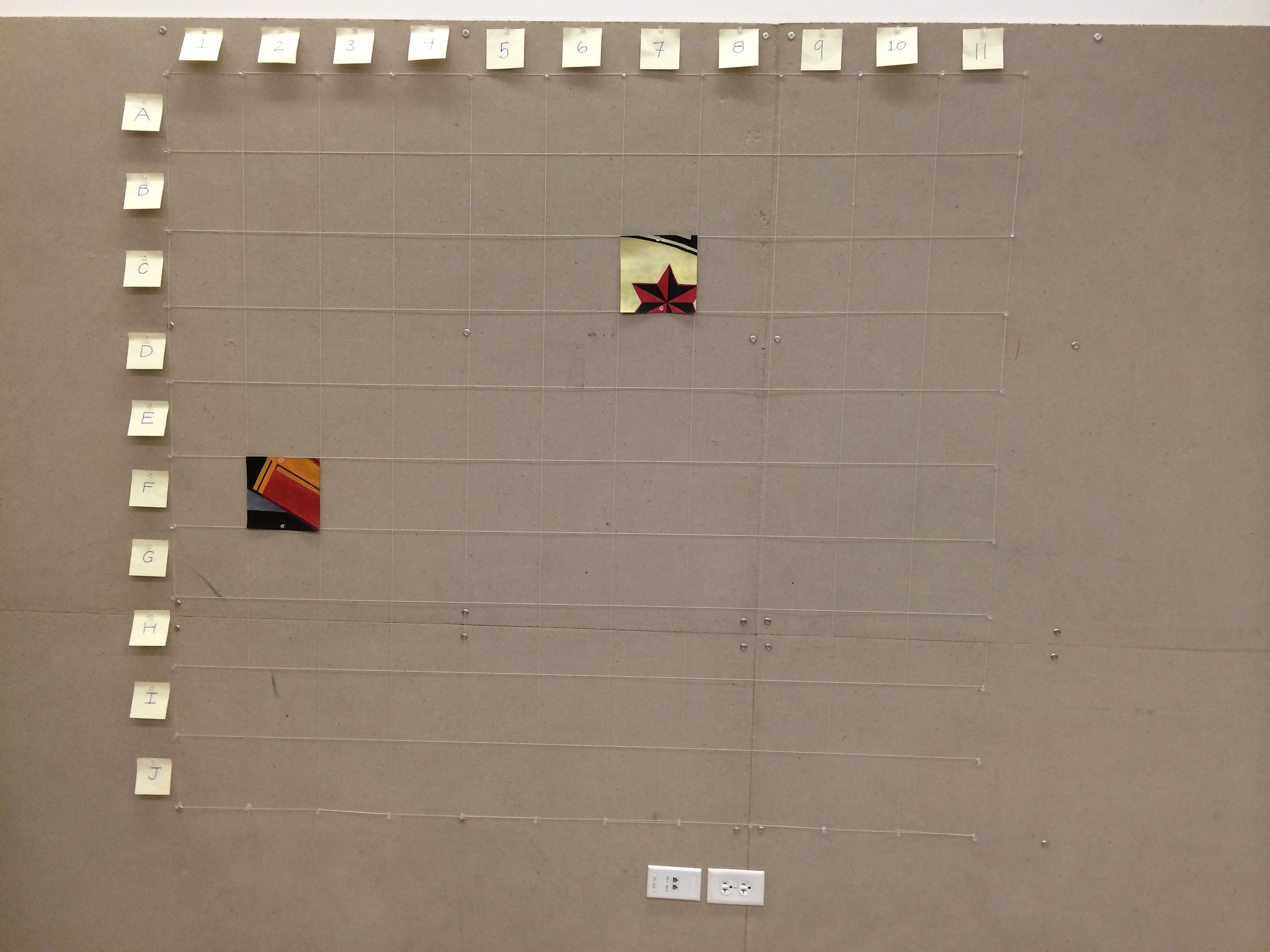
The grid for one painting with a few squares to get it started
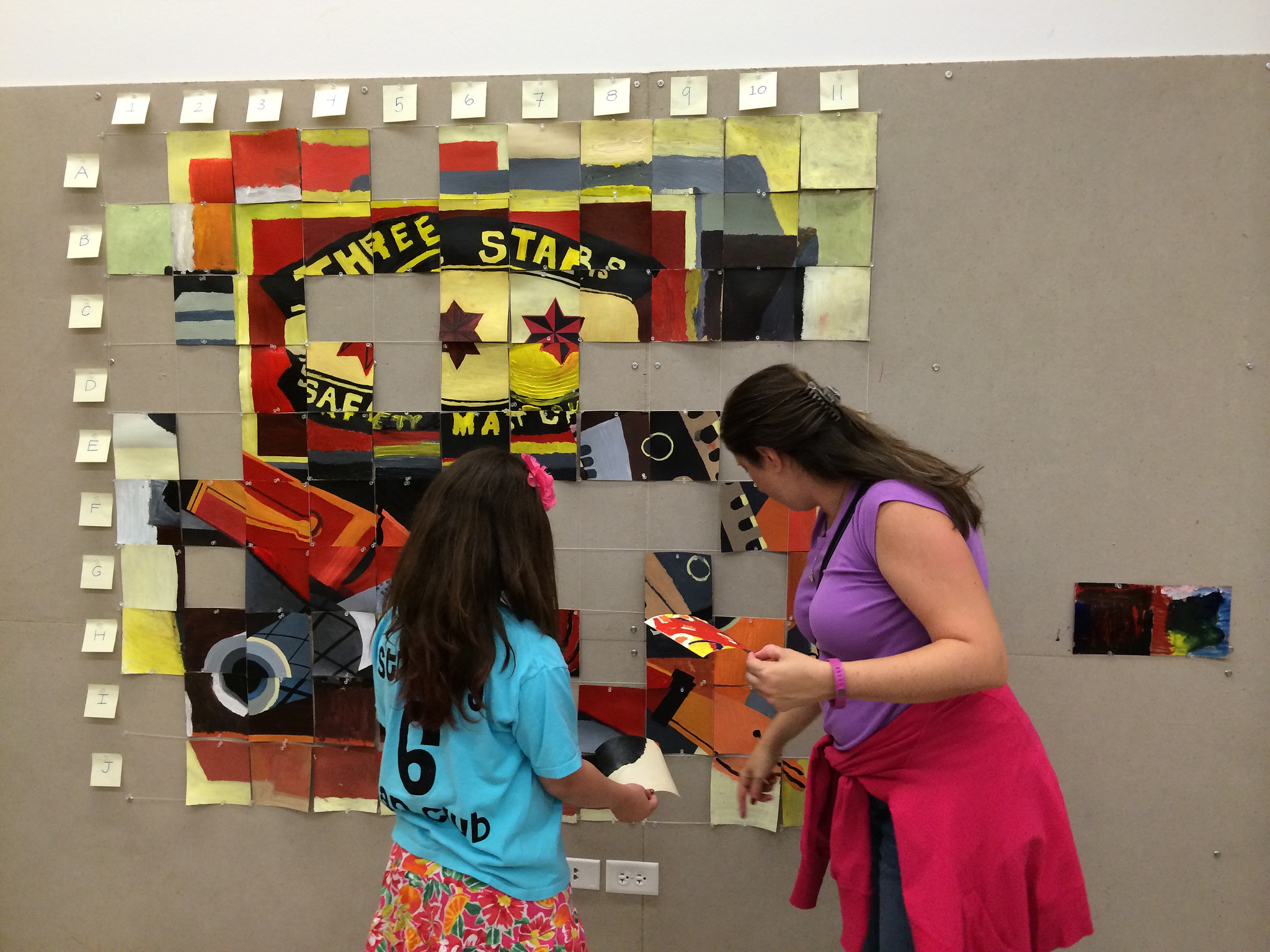
Visitors add to the grid
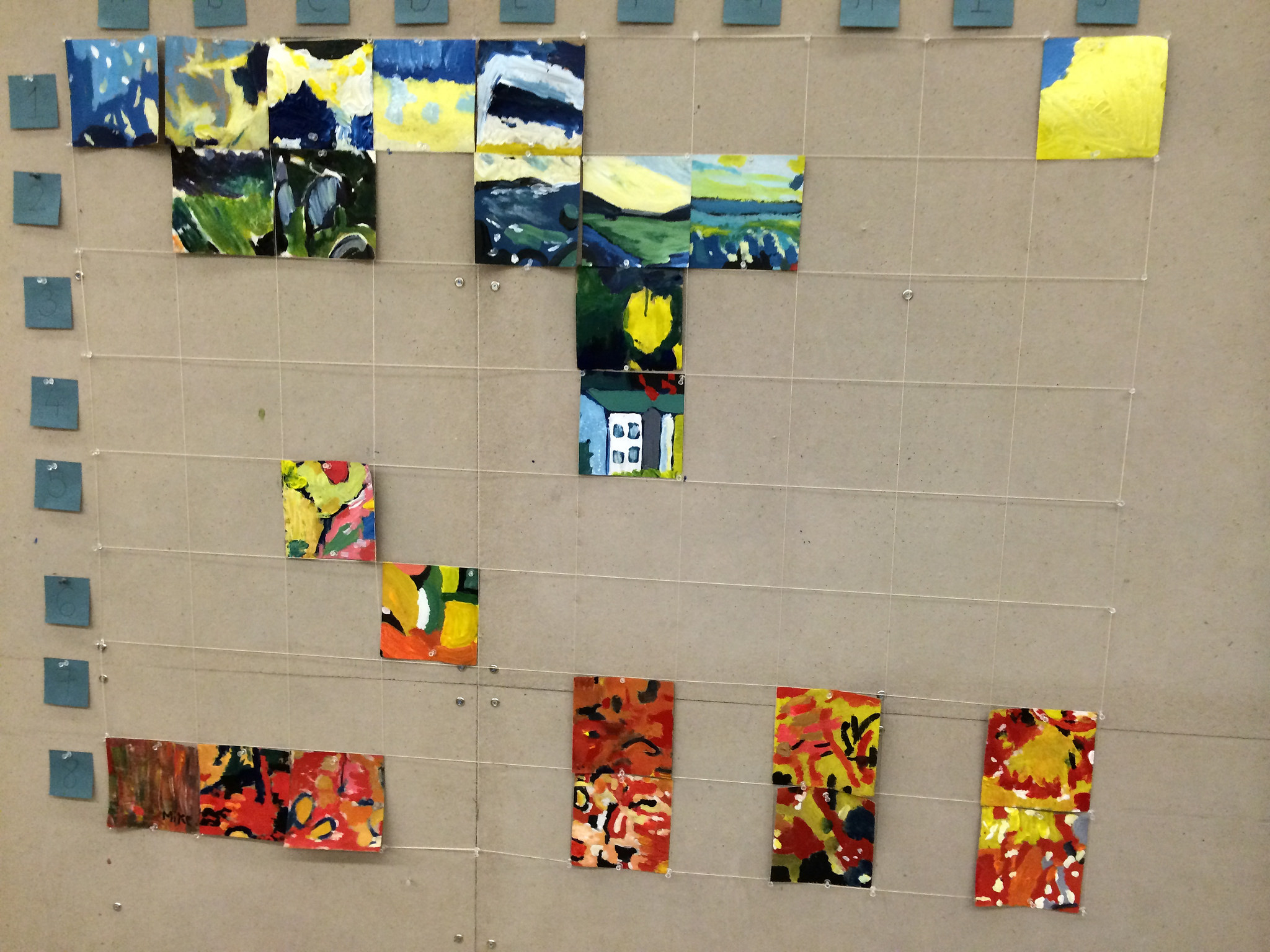
The other painting grid, in progress
-
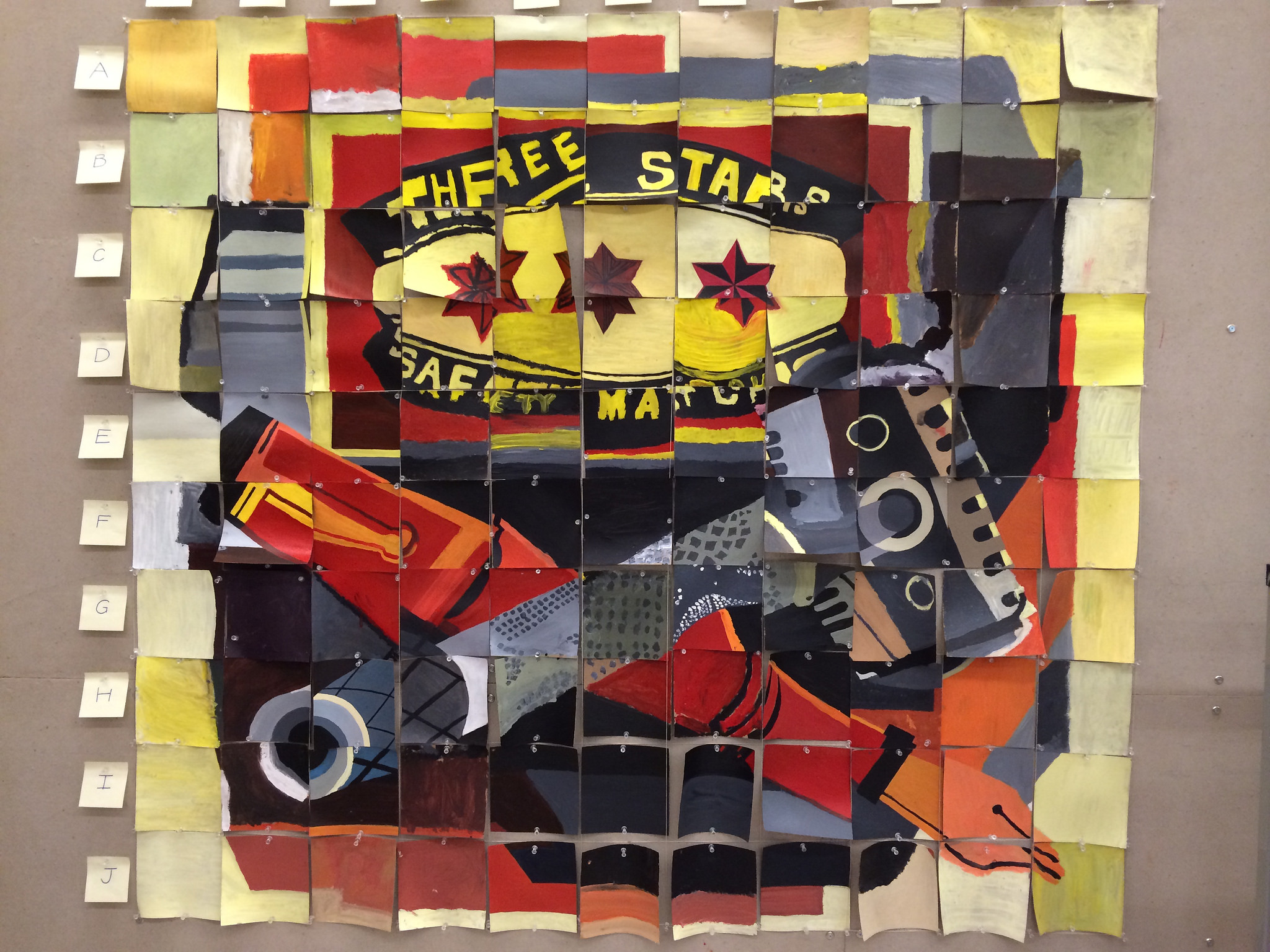
-
Gerald Murphy’s Razor, created by visitors
-
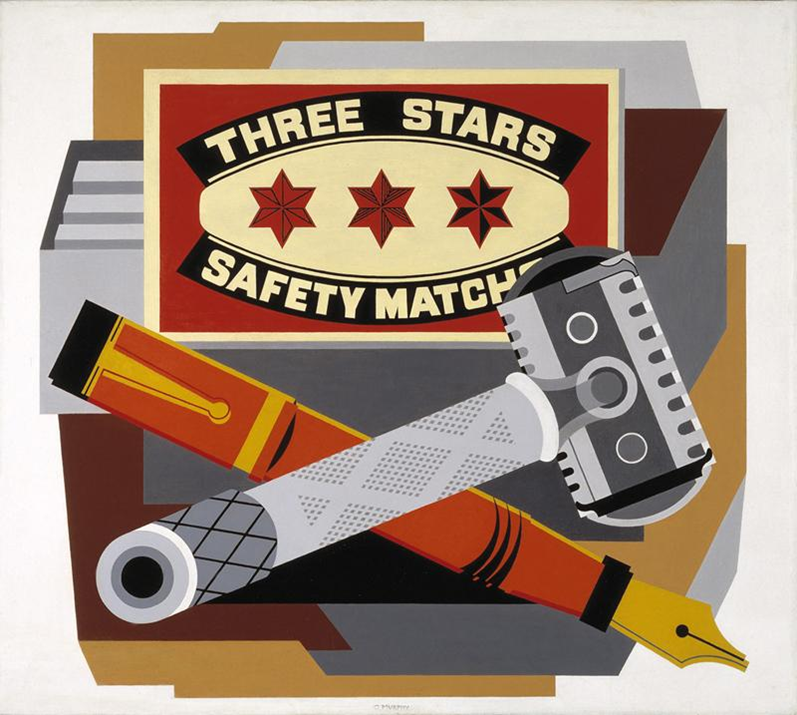
-
Gerald Murphy, Razor, 1924
-
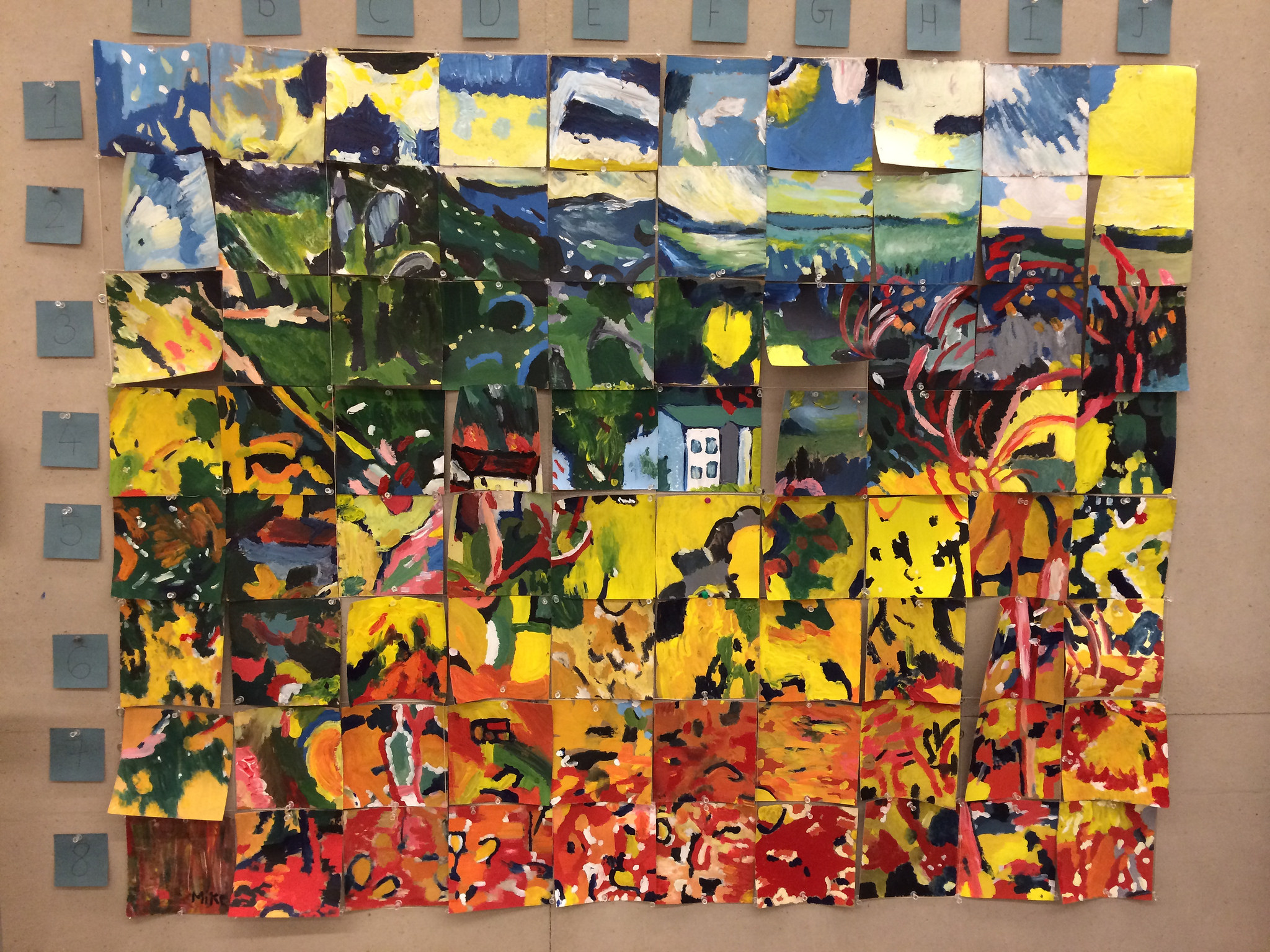
-
Maurice de Vlaminck’s Bougival, created by visitors
-
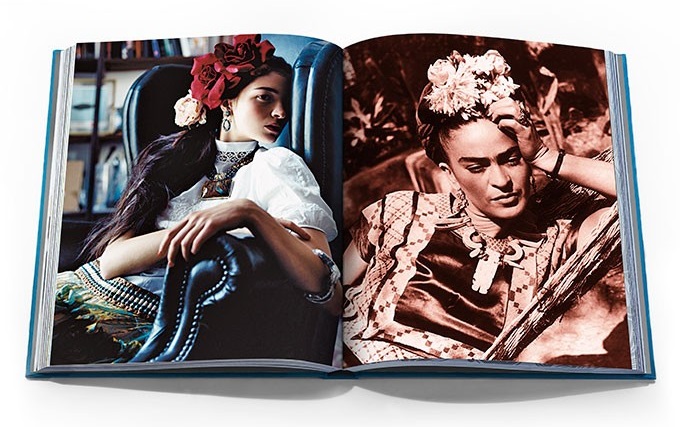
I have discovered that telling a story is core to the purpose of art. An artwork is a mode of communication across time, even across dynasties and cultures, and artists create an extension of themselves and share with us a part of their being.
I am really grateful for the opportunity this summer to intern at C3! The department was very welcoming, and the staff took care to educate us while giving us leeway to express ourselves and take initiative. I loved meeting diverse people, from the speakers to the audience and members of the museum – everyday was a pleasure, and I have fond memories of my interactions and experience to bring home with me back to Hong Kong!
Thank you, Sophie and Chloe, for your very hard work this summer! We will miss seeing your smiling faces every day.
C3 Staff
